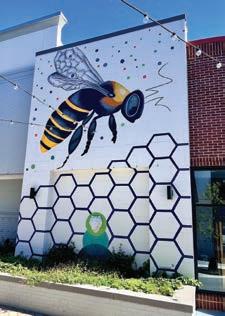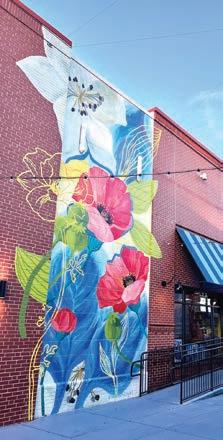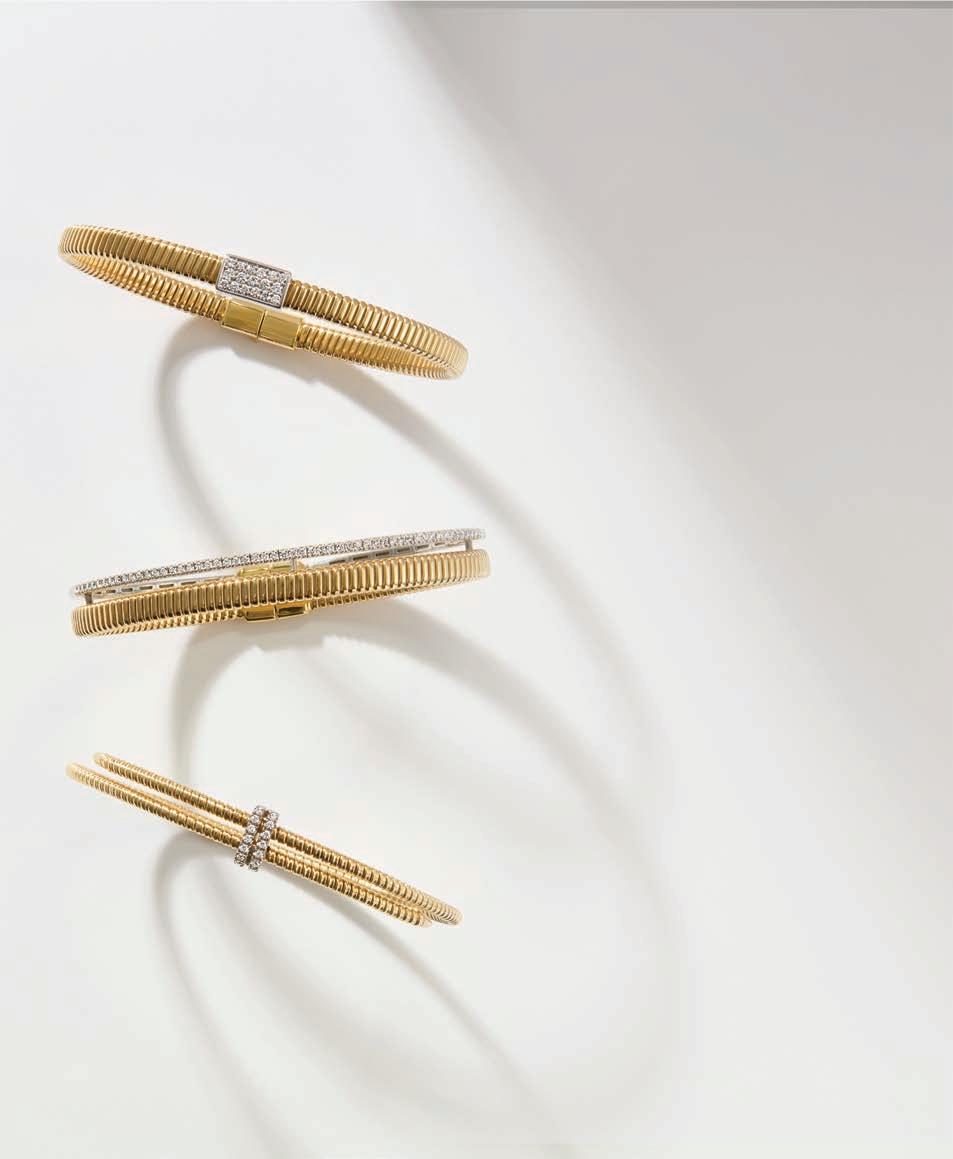




































While producing SouthPark Magazine 12 times a year is no small feat, we realize our jobs are slightly easier than our media counterparts covering topics like crime and local politics. We predominantly write about the good things in life — great food, fine art, beautiful homes, luxurious destinations.
So, when I learned recently that our publication won eight 2025 North Carolina Press Association awards, I was both pleasantly surprised and quite proud of our staff and contributors. Each year, the NCPA, founded in 1873, honors excellence in news, photojournalism and advertising.
Contributing writers Ron Green Jr., Page Leggett, Kathleen Purvis and Katherine Snow Smith were recognized for their stories on the Wells Fargo Championship, ArtPop Street Gallery, local food programs that prioritize purpose over profit, and Paralympian Carson Clough. Our December 2024 cover by photographer Olly Yung, Style Editor Whitley Adkins and Art Director Alyssa Kennedy won second place for Cover of the Year. Our May 2024 issue won first place in the magazine or niche publication category, and our staff also won three awards for advertising, including our Guide to SouthPark. This neighborhood directory, published in collaboration with SouthPark Community Partners, highlights businesses and amenities in SouthPark’s central business district. (A second edition is coming out later this year, and we also recently debuted a Guide to Ballantyne — keep an eye out for both at local retailers.)
Editorial standards are hazier than ever these days. AI-generated everything is creeping into all corners of the internet and social media. And it’s become typical practice for some magazines and websites to “sell” the editorial pages — meaning that sometimes when you think you’re reading an independently written story, the feature was actually bought and paid for by an advertiser. We don’t follow that practice here at SouthPark. Any story you read was chosen by the editors and written by staff or a contributor without “approval” by the subject, unless the feature is clearly noted as sponsored, paid or partner content.
These days, authenticity is becoming rarer and rarer. And while we admit, we aren’t always perfect, we can’t imagine doing things any other way. Thanks to our readers, advertisers, staff and contributors for believing in what we do and for being a part of SouthPark. SP
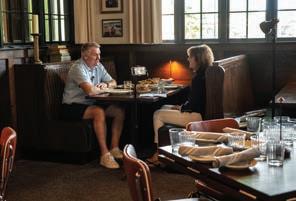






BMW Performance Driving School
The holidays might go by faster than expected this year with this incredible offer. You can get 20% off a class or Experience at the BMW Performance Driving School, now through December 31, 2025. Valid at all three locations – in Spartanburg, South Carolina; Thermal, California; and the iconic Indianapolis Motor Speedway in Indianapolis, Indiana. Offer excludes the M4 GT4 Experience, Race License School and Private Instruction. Offers may not be combined.
Get 20% off a gift card with code 25SPMGC20, and call 888-345-4269 to order yours today.















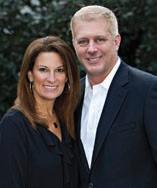

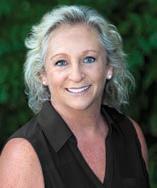


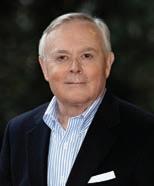



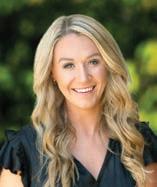

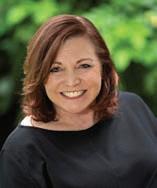
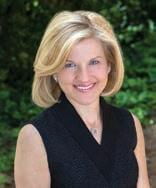




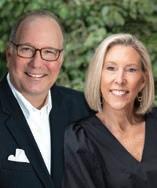







20 | southpark sit-down
Dean Smith: The Charlotte FC coach talks grit, goals and good humor.
24 | design
An entry hall by Marycobb Reeves showcases sentimental artworks and books.
26 | interiors
Courtney Kovacs injects pops of personality into her Cotswold condo.
32 | style
Tastemakers: Renata Gasparian’s favorite things
34 | etiquette
A guide to peaceful holiday gatherings during turbulent times
38 | cocktails
An apple cider-bourbon cocktail by Annie Nelson
42 | around town
What’s new and coming soon in the Queen City
44 | happenings
November calendar of events
47 | art of the state
The color-jangled painting of Barbara Campbell Thomas
51 | southwords
Hope in a box: Cedar chests through the ages
53 | southpark stories
Mahjong minis: A new generation embraces the beloved tile game.
57| bookshelf
November’s new releases
59 | simple life
How I learned to look up and live more fully
63 | well + wise
The psychology of playing small
131 | swirl
Parties, fundraisers and events around Charlotte
136 | gallery
Colorful in Cotswold


ABOUT THE COVER:
Content creator Vidya Gopalan at home (page 68). Photograph by Olly Yung; prop styling by Kendra Surface.



68 | Social savvy by Krisha Chachra photographs by Olly Yung
How Charlotte’s Vidya Gopalan turned a passion for fashion into social-media gold
76 | A family affair by Catherine Ruth Kelly photographs by Dustin and Susie Peck
A Charlotte couple teams with talented family members to lovingly update an historic home.
86 | Praise for pecan pie by Gayvin Powers photographs by Peter Taylor
The classic Southern staple is this year’s IT pie for the holidays.
92 | All the right moves by Michael J. Solender photographs by Richard Israel
The fast-growing Charlotte Chess Center hosts the 2025 U.S. Masters.
96 | All abroad by Michelle Boudin
Charlotte creatives take their talents overseas — and we’re all invited.
101 | Culture trip by Cathy Martin
36 hours in San Juan offers sumptuous food, intriguing history and warm ocean breezes.
105 | Weddings by SouthPark by Sarah Fligel
Eight Charlotte couples say “I do” in style.

Detail shot of “Central Medallion” by artist Barbara Campbell Thomas





1230 West Morehead St., Suite 308 Charlotte, NC 28208 704-523-6987 southparkmagazine.com
Ben Kinney Publisher publisher@southparkmagazine.com
Cathy Martin Editor cathy@southparkmagazine.com
Sharon Smith Assistant Editor sharon@southparkmagazine.com
Andie Rose Creative Director
Alyssa Kennedy Art Director alyssamagazines@gmail.com
Whitley Adkins Style Editor
Contributing Editors
David Mildenberg, Michael J. Solender
Contributing Writers
Michelle Boudin, Andrea Caughey, Krisha Chachra, Natalie Dick, Jim Dodson, Asha Ellison, Sarah Fligel, Ken Garfield, Catherine Ruth Kelly, Juliet Lam Kuehnle, Page Leggett, Gayvin Powers, Liza Roberts, Michael J. Solender
Contributing Photographers
Daniel Coston, Justin Driscoll, Richard Israel, Amy Kolodziej, Dustin and Susie Peck, Peter Taylor, Olly Yung
Contributing Illustrator Gerry O’Neill
ADVERTISING
Jane Rodewald Sales Manager 704-621-9198 jane@southparkmagazine.com
Mercy Clark Marketing Specialist mercy@southparkmagazine.com
Brad Beard Graphic Designer
Letters to the editorial staff: editor@southparkmagazine.com
Instagram: southparkmagazine
Facebook: southparkmagazine
LinkedIn: SouthPark Magazine

Owners
Jack Andrews, Frank Daniels III, David Woronoff in memoriam Frank Daniels Jr.
David Woronoff President david@thepilot.com

































































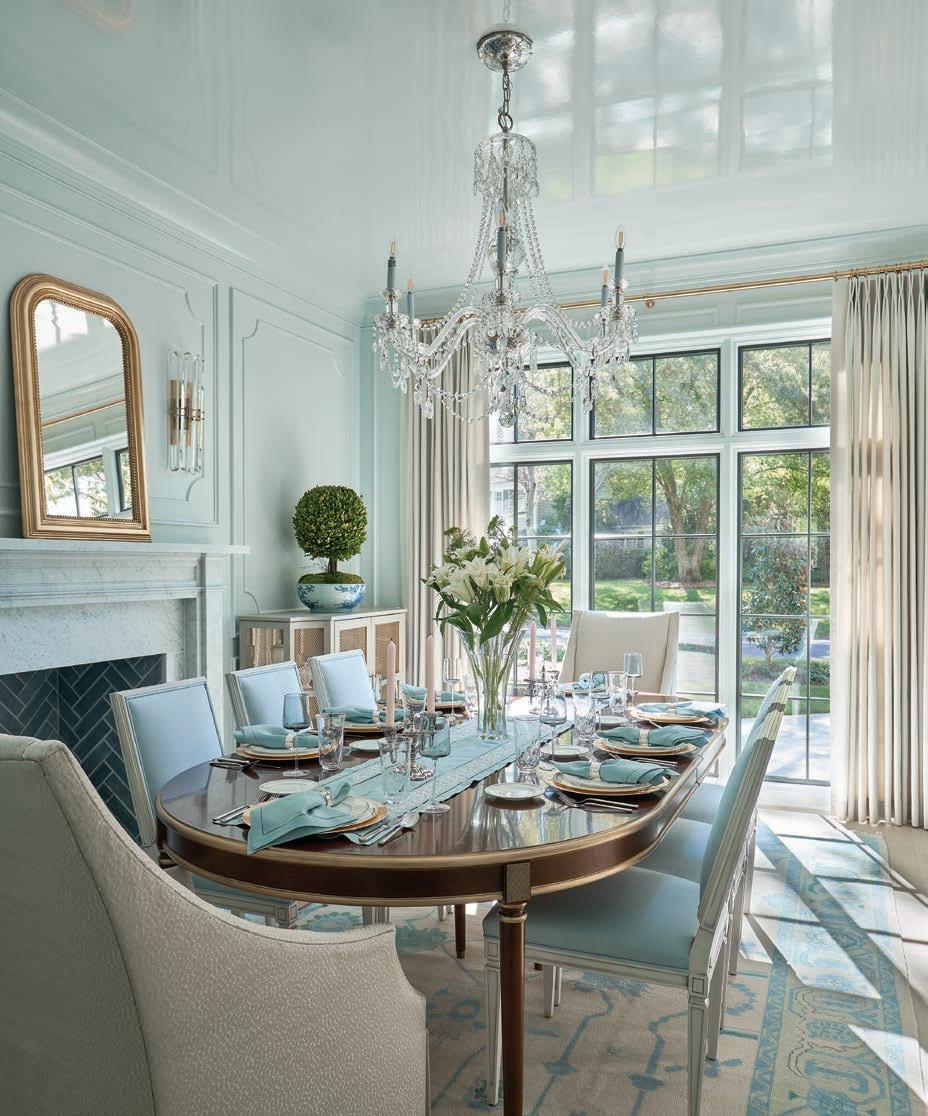

people, places, things

Richmond, Virginia-based artist Leigh Suggs is among the newest artists-in-residence at McColl Center. The Boone native creates through drawing, painting and meticulous hand-cutting, resulting in intricate patterns and grids that shift with the viewer’s perspective. The fall cohort also includes Hai-Wen Lin, Rebecca Lipps and Durham artist Jason Lord; the residency runs through Dec. 15. To learn more about the artists and upcoming events, visit mccollcenter.org. SP
The Charlotte FC head coach talks grit, goals and good humor.
by Natalie Dick | photographs by Richard Israel
Dean Smith never intended to coach Major League Soccer, yet here he is in his mid-50s, leading Charlotte FC on its second playoff run since his move across the pond in 2023. The team has been electric under his watch, breaking club records and tying the league’s longest winning streak.
Smith’s distinctive coaching style seems wildly popular with players and the club’s growing fan base. Nicknamed by some “Ted Lasso in reverse,” he’s funny, feisty and unassuming. But unlike the fictional TV coach, Smith is a seasoned pro who knows the game inside and out. What’s unfamiliar to him is all things Southern.
“I wasn’t looking to come to Charlotte. I thought I had unfinished business in the U.K.,” Smith says in a thick Brummie accent, a dead giveaway to his West Midlands English roots.
It’s late afternoon, midweek, when we meet for a bite at Little Mama’s — his favorite Charlotte restaurant, only a few blocks from his SouthPark home. No one seems to notice Dean Smith has entered the building as he approaches our table. I’m surprised; he’s not.
“If you Google Dean Smith in the U.K., you come up with me,” he explains matter-of-factly. “If you Google Dean Smith in the U.S., well, you know.”
It’s one of many things the former Premier League manager is still adjusting to as he nears the end of his second year as head coach of Charlotte FC. The past 23 months have been a whirlwind, with his departure from a culture where football (i.e. soccer) is king to starting fresh in a new country, leading a club still in its infancy. Through it all, the 54-yearold Englishman remains unflappable.
Smith grew up northwest of Birmingham in the gritty suburb of Great Barr, where life was simple — and football was everything.
“I remember always playing football. In the house. Outside in the garden. Just kicking the ball against the wall with my two best mates or playing ‘kerby’ in the street, where you throw the ball off the opposite curb and catch it.” His eyes light up at the memory.
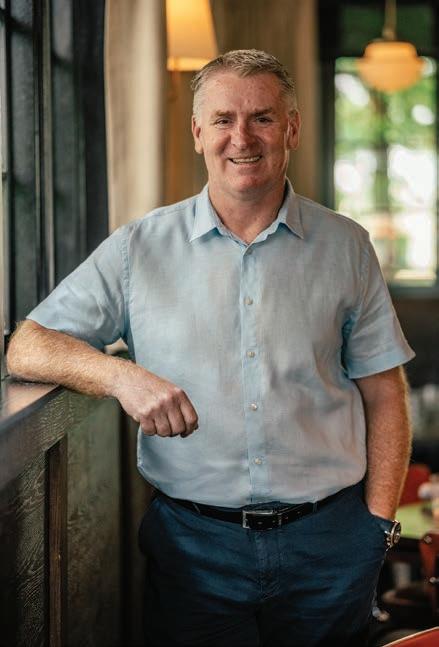
What he lacked in natural talent, he made up for with grit. His hardworking parents — his dad, a factory worker, and mom, a master of odd jobs — instilled in him an important lesson: Nothing comes without earning it.
“I was never the most talented player, and I knew that. I saw how hard [my parents] worked for me and my brother to have a summer holiday, new trainers or to go and watch Aston Villa. I always knew I had to earn that right as well. So, I worked extremely hard,” Smith says.
The journey wasn’t easy. At 15, Newcastle United’s youth team offered him a trial — only to cut him a year later in favor of local boys. Disappointed, Smith briefly shelved football for a factory job mixing paint. Then fate called. Third-division Walsall offered him a contract — less money than the factory job, but with bus passes and a chance to chase his dream.
“I went from £90 (about $121) a week to £27.50 (about $37) a week. I was thrilled! Football was all I’d ever wanted to do,” he says.
Over 16 years and nearly 700 matches, Smith captained clubs up and down the English football pyramid. The pinnacle came at first-division


Sheffield Wednesday, where he found himself playing in front of 35,000 fans.
“That was the biggest move of my playing career. I was 31 years old and at my peak, but I knew the time (to retire) was coming,” he tells me. By 2005, Smith replaced his cleats with a whistle and a spot along the sideline.
“I learned a lot from other coaches I worked under of what not to do rather than what to do,” he says. His coaching career carried him from Walsall to Brentford to his boyhood dream team: Aston Villa.
It was storybook stuff. Under Smith, Aston Villa clawed back to the Premier League, winning the championship playoff final in front of 85,000 roaring fans. Even Prince William, a diehard supporter, took notice, visiting training and rallying players in a Cup final.
But Premier League football is ruthless. Three years after his rise, Aston Villa sold its best player for a record £100 million. Five losses later, Smith was out. He didn’t know it yet, but his next chapter would be written across the Atlantic.
“Most Englishmen get to the point where they’ve had too much

Top left: Chicken Riggies (chicken, mushrooms, red bell and cherry peppers in a tomato sauce with house-made rigatoni)
Right: Mozzarella with olive oil, white bean and salami salad, and Sicilian roasted peppers

beer over the years, so wine becomes your go-to drink,” Smith playfully explains when I ask about the clean-sheet promise he made to his players shortly after becoming Charlotte FC’s new coach.
“I pinched the idea from my assistant coach at Aston Villa. If we kept a clean sheet (the other team scoreless) he would give the defenders a nice bottle of red wine. I liked the idea. So, when we kept a clean sheet against New York in our first home game, I said red wine for clean sheets! Little did I know that it would cost me a lot of money,” jokes Smith.
Smith has a knack for disarming the seriousness of football without losing his edge. Take, for example, an inside shtick he’s been secretly working into this season’s post-match analysis.
“Our content team asked if I could slip in a different song title and a few lyrics every press conference,” Smith says. “I said yeah, right, let’s go with British bands. I started with The Beatles … When we signed [forward] Wilfried Zaha, they asked me how he was doing, and I said he’s got great feet like he’s dancing through ‘Strawberry Fields.’” He’s also referenced Adele, The Stone Roses, Rod Stewart and Elton John. “I got one for the Spice Girls, too. I said he doesn’t want to be a ‘Wannabe,’ he wants to be a ‘winna-be.’”


Chicken Parmigiana: Hand-pounded, breaded chicken breast with tomato-basil sauce, Asiago and Muenster cheeses, and spaghetti.

If he weren’t a football coach: As a teenager, I considered becoming a PE teacher or joining the army. My mum’s father died in World War II, so she never met him. I’ve visited his grave in France — a powerful experience. But once football came along, that was it.
Other sports: Golf, absolutely. I’ve been playing for years. And basketball. Before Charlotte, I followed the Bucks because Aston Villa’s owners were also involved there. I even went to see them play the Hornets last year — no comment on who I rooted for.
On Prince William: He’s Villa mad. When I was manager, he came for the opening of our new center and even mentioned my dad, which floored me. Later, before the Cup final, I asked if he’d say a few words to the players. He came into the dressing room and was brilliant.
Off the pitch: I’m part-owner of a racehorse in the UK called Secret Trix. It keeps things interesting.
Favorite quote: Golfer Tommy Fleetwood once said, “My dad taught me to be a good person first, a golfer second.” That line stuck with me. I feel the same — good person first, football second.
Smith’s wit isn’t just for jest. He uses it as a tool to create an atmosphere where players feel seen and heard.
“I’ve been left out of teams; I’ve seen mates told they’re done. Those conversations aren’t easy — but there’s always a right way to tell people.”
Still, his expectations are clear.
“Every day is a school day,” Smith says. “I have a saying: ‘Excuses are well-planned lies.’ So don’t make excuses. You can have reasons, but don’t make excuses.”
That candor bleeds into his bond with fans. Suspended for September’s Inter Miami game after his third yellow card of the season, Smith set the tone for the massive matchup by joining fans in the pre-game “Pepas” tradition — linking arms with club owner David Tepper and bouncing up and down to the pounding music on the jumbotron.
“I felt a connection with the sporters (fans) straight away,” he says. “I love the diversity, how they all mix and get on together, but are supportive of the team. They want success for Charlotte, as do I.”
Ask Smith about tactics for the club’s future, and he talks about structure and discipline. Ask about his family, and his face softens instantly. He and Nicola, his wife of 28 years, have two adult children. Their son Jamie, newly married to an American, came to the U.S.
first, playing college soccer at Limestone University in Gaffney, South Carolina, and N.C. State University, before joining Crown Legacy FC (Charotte FC’s reserve team) in January. Their daughter Katie remains in the UK, where Nicola splits her time.
“It helps that there are three direct flights every day to London Heathrow,” Smith cracks.
Ironically, it was during a trip to see Jamie play in June 2023 that Smith first connected with Charlotte FC.
“We were on summer holiday flying out of Charlotte, and I knew [Charlotte FC General Manager Zoran Krneta] from before. I phoned him for tickets, and we watched the match from his suite.”
No one was more surprised than Smith to find himself back on North Carolina soil at the end of the season as the club’s head coach. Is he here to stay? He’s optimistic the team is just hitting its stride and determined to leave a lasting legacy by building a culture based on unity.
“We want to win,” Smith says adamantly. “We want to do it smartly and with togetherness through the whole club — the players, the staff, the support staff and the supporters. Everybody is important in making the wheels turn. If you can make people feel valued in their job, you have a good chance of being successful in any business.” SP
VIDEO EXTRA: Hear more about the gaffer’s coaching style and how he sneaks in British song titles and lyrics postgame. Scan the QR to watch more of Natalie’s interview.



The open foyer of this circa-1960, Sherwood Forest ranch was designed to serve as a “visual connector” to the home’s living and dining rooms, says interior designer Marycobb Reeves. That meant weaving together new furnishings with family heirlooms, along with the couple’s collected artworks and books on art history.
“The console we selected was arguably the most important of the design,” Reeves says. “In the adjacent dining area sits one of the client’s most treasured pieces: a solid mahogany, live-edge dining table sourced by her great-grandfather in South America and passed down through her family.” Reeves helped the homeowner choose a new piece that would anchor the entry and be cohesive with the beloved heirloom: a zebrawood console with a zigzag base, finished with a dark walnut lacquer. “The zigzag of the console gently mimics the undulation of the live edge of the dining table,” Reeves says.
The console is flanked by two bronzed-iron, high-back chairs with leather seats. The ceiling fixture — a burnished brass drum shade with a heavy patina — subtly complements the timeworn texture of the home’s original slate flooring.
“We love the richness it adds to the space,” says Reeves. SP — Cathy Martin





















Courtney Kovacs injects pops of personality into her Cotswold condo.
by
Whitley Adkins | photographs by Amy Kolo | interiors styling by Brooke Werhane
Having never visited Charlotte, Courtney “Coko” Kovacs arrived in the Queen City from just outside Flint, Michigan, in 2007 “by the grace of God,” she says. Despite her lack of fine-dining experience, the former cocktail waitress worked for a decade at Quail Hollow Club, from poolside service to private dinners. In 2009, she began
dog-sitting for several club members, which led to additional house-management gigs.
“I took out the trash, picked up groceries, handled car inspections, coordinated painters and more,” Kovacs says. Encouraged by club members and the general manager, she went back to school and studied hospitality at Central Piedmont from 2009-2012.


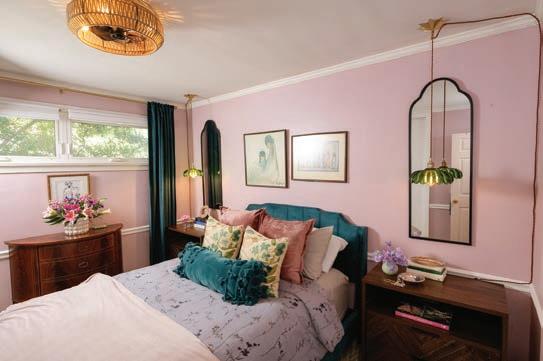



Thrifting is a big inspiration for Kovacs.
“A lot of times I don’t know exactly what I will use the item for, I just know I like it. Like a hand that hangs by my door, which holds my car keys, and another gold hand in my hallway that holds a vase with flowers as well as my dad’s watch, because I wanted it to have a special place.”
Top left: Kovacs found the Ted DeGrazia pictures above the bed in her father’s basement after he passed away. “I found out from my mom that they were the first two pieces of artwork they purchased after their marriage.”
In 2015, Coko Concierge was born. For a monthly fee, services include everything from travel planning to waiting for the cable guy to taking the car in for an oil change.
Kovacs’ own home, a one-bedroom, one-bathroom condominium in Cotswold, is much like her relationships: collected and intentional with a focus on all things personal and meaningful.
“Everything has a story behind it,” she says. About five years ago, designer Melissa Herriott helped her place furniture and create a gallery wall. Recently, she brought in interior designer Rainy Westerman to refresh the space.


Kovacs sharpened her hosting skills while working at Quail Hollow Club and learned tips from various clients. “I think making people feel at home is important,” says Kovacs. Doing things out of love goes a long way, she says. “For example, sending a card that may simply say, ‘You made it through this weekend without crying!’
… Love on someone for not only the big wins and losses but the small wins and losses.”
• When hosting a party, set bottled water at the front door for guests to take on the way out, along with a plate of cookies for the Uber ride.
• Don’t overthink it. What do people like? Do they like Chick-fil-A? If yes, then get Chick-fil-A nuggets. You can incorporate high and low to make people feel at home.
• Create a designated purse place, like a bench by the door, so everyone will see where to put their personal belongings.
• For overnight guests, make a gift basket with bottled water, snacks, toothpaste, face wipes and a little note. Sometimes even a little picture of that person in a frame, or their favorite lotion. Always include dark-chocolate almonds from Trader Joe’s.
• Curtail gift-giving to things that are personal. Give framed photos of a pet, since people don’t frame pictures anymore.
• Personalized matches on a bar is an inexpensive touch.
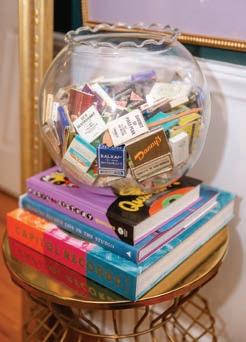
“I have my grandmother’s matchbooks from all over the world. I’d pull out one, and she’d tell me about each trip. I like being able to see them. My favorite things are in view all the time.”
“Working with a lot of interior designers sparked an interest in me to determine how I wanted my own home to feel. I have learned from my clients and their designers.”
When her father passed away a little over a year ago, her home became a place for healing.
“This is when I created my disco hallway. I started buying more artwork, got many pieces framed and started incorporating items I had picked up along the way and finding a place for them.”
Family heirlooms such as her grandmother’s cocktail plates are on view for constant enjoyment.
“I feel like my ancestors are in my home because things handed down to me are not in a box but rather on display, which allows me to feel close to them.” SP
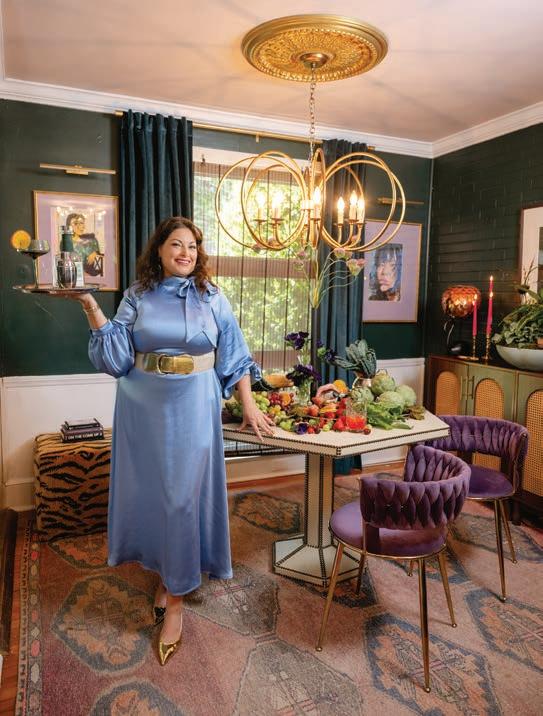



by Michelle Boudin


Renata Gasparian opened her namesake clothing boutique in the spring, showcasing her unique designs. “We say it’s a mix of bohemian glamour and Brazilian soul, with a touch of Southern charm,” says the busy mom of three. The East Boulevard showroom is just a short drive from her Myers Park home.
Gasparian grew up in Brazil and worked for an international boutique department store in Sao Paulo before moving to Charlotte 10 years ago.
Known for her figure-flattering, flowy dresses, skirts and vests, Gasparian handpicks fabrics during twice-yearly visits to India with her father, who co-owns the brand. She launched a jewelry line in late 2024, which is also handmade in India. “It’s very edgy but also functional with diamonds, colored stones — a mix of rubies, sapphires and emeralds,” Gasparian says. “People were always complimenting my jewelry, so I thought, let me try and see where it goes.”
Comments have been edited for length and clarity.

EAT + DRINK: My favorite is Stagioni. I love their sides — caramelized carrots, Brussels sprouts — and they have great salads. It brings me a little bit of that feel of being in Europe, my favorite travel spot. With the kids, we love going to Kid Cashew — they have a nice Sunday brunch. We also enjoy The Jimmy — it’s a neighborhood place, and they’re very sweet with the kids, with a great menu for both kids and adults.
CULTURE: I love that part of uptown where the Bechtler meets The Mint Museum. It’s a great spot where you’re in Charlotte, but it also has a big-city feel.
PARKS: We’re very fortunate that we live right beside Freedom Park, so that’s always a great place to go for a walk or take the kids to the playground.
WELLNESS: Woo Skincare + Cosmetics — I love the ambience, the women who work there, and the easiness of finding things — and it’s extremely well curated. Infinity MedSpa and Wellness for Botox.
GETAWAY: St. Barths is my favorite. I was there with my family last summer on a yacht for a week, and it was one of the most memorable trips ever. Being on a boat makes everything special — you’re on the water all the time and you can enjoy stopping in different islands. SP

A guide to peaceful holiday gatherings during turbulent times by
Page Leggett
Holiday gatherings have always had the potential for drama. But this year looks to be a doozy.
Keeping peace at the holiday table is more of a hot-button issue than I initially imagined. Two etiquette experts I asked to weigh in on the topic did not respond to multiple emails. (A third offered to email her replies, but after seeing my questions said she wouldn’t have time, after all.)
I can’t be sure it was the topic that spooked them. But thankfully, Courtney Savoy is polite and brave enough to go on record. The director of Charlotte’s Academy of Etiquette and Decorum and author of Etiquette A-Z: The Essential Guide to Manners for Adolescents offers simple, practical (and downright lyrical) advice.
For instance: “A family gathering is not a debate stage, but a sanctuary.” And: “Civility is not weakness. It is strength under pressure.”
Hosts, she says, aren’t just setting the table; they’re creating an atmosphere. “Civility,” she says, “is the first course.”
Following are pointers on creating a harmonious gathering of
family members — both those likely to wear a red MAGA baseball cap or come dressed in an ACLU T-shirt. (Etiquette experts would surely advise against both.)
“A thoughtful host sets the tone,” Savoy says. “Ground rules can be framed not as restrictions, but as a gift to the gathering: ‘We’re here to enjoy each other, so let’s leave politics at the door.’ A host’s role is to create an environment where guests feel safe, respected and able to focus on connection, not conflict.”
Doug Johnston, a Rochester, New York-based leadership consultant and author (Thriving in Conflict: How to Build a Robust Culture of Feedback, among others) calls ground rules “imperative in today’s culture.” His own extended family has implemented a “no-politics rule” for every gathering.
“I think the host sets the ground rules, but I believe anyone can declare a politics-free zone,” he says. He did just that last year in the poker club he’s been a member of for 40 years.



If someone violates the rules and the conversation gets heated, remember: You don’t have to engage.
— Courtney Savoy

“The host is the conductor of the gathering,” Savoy says. “But that doesn’t mean silencing every note of discord. It does mean guiding the energy of the room. Redirect with grace. If tempers rise, shift focus to a toast, a story or a lighthearted question.”
Hosts should also prepare for unpleasant possibilities in advance, Savoy says. Anticipate the worst, in other words, and plan for it.
“A skilled host redirects without embarrassment,” she says. She suggests responding to the offending party with something like: “‘Uncle Tom, let’s revisit that later. Right now, I’d love to hear about your fishing trip.’ The goal is not to scold, but to steer.”
The host doesn’t shoulder all the responsibility for maintaining decorum.
“Guests share equal responsibility,” Savoy says. “Self-control and respect are the highest forms of etiquette. If you know you cannot refrain from conflict, protect the gathering by excusing yourself entirely. True refinement is knowing when silence serves better than words.”
Both Savoy and Johnston agree: Respectfully declining an invitation — even one from a family member — is acceptable if you think conflict is unavoidable. Johnston follows that advice himself. “If I think there’s


potential for rabid politics, I don’t go,” he says. “And if it comes up, I leave the room.”
Of course, you can leave quietly and without disruption.
Monica Guzman, a journalist and daughter of Mexican immigrants with political views different from her own, wrote I Never Thought of It That Way, a guide to having civil discussions in an era in which rudeness seems to rule the day.
“‘I’m not comfortable with this conversation’ can be a great thing to offer when any conversation loses its way,” she writes. Keep that one handy.
And if you do accept an invitation, Savoy says, “Remember: Civility is your gift to the host. Your presence should add harmony, not tension.”
People with opposing viewpoints can live in harmony, Savoy insists. But even if your family finds that challenging 364 days out of the year, let Thanksgiving be a time for unity. “The holiday table is rarely the place for rational debate,” she says.
Johnston is less optimistic. He’s found the tried-and-true tools still work in business settings, but not at family gatherings, where the bar for good behavior is lower.
“I wish we could agree to disagree and discuss,” he says, “but I fear we are too divided.”
Savoy, however, says it’s possible “if civility is valued over persuasion.”
So, don’t head over the river and through the woods to grandmother’s house determined to convert her to your side. Go instead with the intention of creating harmony and expressing gratitude.
“Etiquette does not demand agreement,” Savoy says. “It demands respect.”
And it doesn’t mean you have to acquiesce. “We can acknowledge our differences without weaponizing them,” she adds. But not at the holidays. Save political discussions for later.
And if things start to get tense, Savoy says, remind yourself this: “Family gatherings are about connection, not conversion.”
“Resistance” is a word we’ve heard often these past few years. Savoy gives us a different and apolitical way to think about it.
Each time you inject kindness into a situation, refuse to take the bait, maintain calm, change the subject, or look for what unites us rather than what divides us, it’s resisting further division.
“Civility is an act of resistance in a fractured world,” Savoy says. “Choosing calm, measured words when everything around us feels unstable is a strength. True etiquette equips us not just to be polite, but to be anchors of grace when others are adrift.”
The best gift any of us can give ourselves, our families and our society is to put politics aside this holiday season. Being polite, as it happens, is patriotic. SP









































































































even wrap all your purchases. Well, almost all.







by Asha Ellison | photographs by Justin Driscoll
When the days grow shorter and there’s a slight chill in the air, Annie Nelson wraps herself in the nostalgic warmth of bourbon, apple and everything spice. Nelson grew up in upstate New York’s Finger Lakes region, where the brisk autumn temps are just right for applepicking, apple cider and all things fall.
“Fall is my jam,” says Nelson, the youngest of three siblings who grew up in the “middle-of-nowhere” between Rochester and Syracuse. Her father, who works with dairy farmers, and her mother, a retired educator, still live in her childhood home. And while she enjoys going back to visit, Nelson wanted to build a future for herself elsewhere.
After graduating from SUNY Geneseo in 2016, Nelson, an avid animal lover, worked at a doggy day care, earning minimum wage. One fateful Friday, a coworker who was moving to Charlotte joked with Nelson that she should join her. Nelson was reluctant, at first.
“But I sat with it over the weekend and I asked myself, ‘Why can’t you go?’” In October 2017, she made the move of a lifetime.
“I chose the service industry because I knew you could essentially do the work anywhere,” Nelson says. “It turns out that I’m actually really good at it.”
In Charlotte, Nelson moved up the service ladder quickly, gravitating toward bartending.
“I took opportunities as they came my way,” she says. In 2019, Nelson joined the opening team for award-winning Chicago cocktail bar Billy Sunday’s Queen City location at Optimist Hall. She was promoted to bar manager and built a dedicated team, community following and a name for herself as an exceptional bartender.
“I am flattered whenever anyone experiences what I do and thinks, that’s a little more than bartending,” she says. “My degree is in psychology, and my curiosity about people and how the mind works plays into my job. I love making people what they want, educating them about cocktails and clearing up misconceptions they may have about the mixing process.”
Nelson admits that she is also her most confident and comfortable self behind the bar.

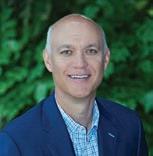















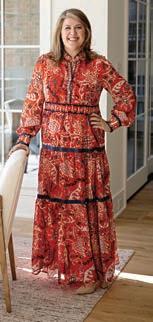


Cottingham Chalk has long set the bar for real estate excellence in Charlotte. Now, as part of Compass, we’re able to preserve the core values that define us – integrity, collaboration, and commitment – while gaining access to cutting-edge tools and expanded resources. Same people. Same values. Same exceptional service.

“I learned a while ago that I have social anxiety, but it’s nonexistent behind the bar. I have found my element — I’m in my domain, and I enjoy being social there.”
In April 2025, Billy Sunday and its sister bar, Spindle Bar, closed abruptly. Three months later, Hibernian Hospitality, the team behind Charlotte Beer Garden and Canopy Cocktails in South End, took over the Spindle Bar space and reopened it as The Bar at Optimist Hall. Nelson, and much of the former Billy Sunday crew, came on board.
Does Nelson see a bar of her own in the future? Yes, no and maybe.
“I sometimes dream about starting my own thing, but I’ve been at Optimist Hall since it opened, and leaving here would be like losing a piece of myself.”
As the lingering heat of summer begins to fade, it’s the perfect time to try making one of Nelson’s favorite fall drinks, an apple-cider bourbon cocktail aptly named Donut Stop Believing.
“Believe in yourself,” Nelson says to all the home mixologists out there. “And have fun!” SP
Serves one
INGREDIENTS
1.5 ounces bourbon
.5 ounce Licor 43
1 ounce heavy cream
1 ounce apple cider syrup (see recipe below)
1.5 ounces apple cider
3-4 dashes Angostura bitters
Dehydrated apple slice for garnish
1. Combine all ingredients in a shaker tin and shake for about 30 seconds. Strain into coupe or martini glass.
2. Garnish with a dehydrated apple slice, and enjoy!
1 cup apple cider
.5 cup packed brown sugar
1 cinnamon stick
.5 nutmeg seed, chopped
10 cloves
8 allspice berries
1. Combine all ingredients into a small pot and bring to a simmer. Stir until sugar is fully dissolved.
2. Simmer uncovered for 30 minutes or until desired consistency. Let cool, then strain into a glass jar with a lid. Store in the refrigerator until ready to use.




Connecticut-based PopUp Bagels opened at The Bowl at Ballantyne. Goodyear House in NoDa debuted a Sunday brunch buffet for $40 per person, free for kids 10 and under. Foxcroft Wine Co. rebranded as Foxcroft Wine and Food

SMALL SIPS: Sneak cocktail bar in Elizabeth introduced eight mini cocktails, including two zero-proof options, for $10 each.

Dunbar Social by Topgolf Swing Suite opened at The Ballantyne hotel. The 9,200-square-foot restaurant and entertainment venue has five Topgolf simulator bays for groups up to 10, an indoor-outdoor bar, golf-themed cocktails, and a food menu with pizzas, salads, burgers and more.

Organic bedding boutique Boll & Branch opened at SouthPark Mall. SP





OFFERS AVAILABLE FOR A LIMITED TIME
Explore the beautiful one bedroom and one bath floor plans available.







Starting at $4,995






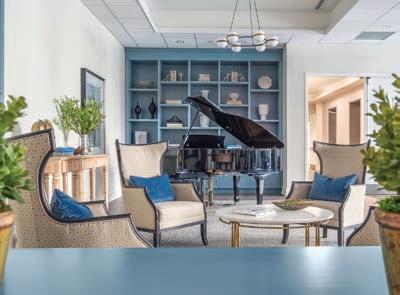
Surrounded by the heritage neighborhoods of Eastover, Myers Park and Dilworth – its designer nishes, social events, dining and resort-style amenities make it a premier Charlotte address.
Learn more about our on-site Medical Partners.
At e Village on Morehead, our commitment to wellness extends beyond comfort and hospitality to include trusted, on-site medical partnerships that bring care directly to our residents – in their homes. e Village on Morehead o ers a full suite of assisted living services via BAYADA, ensuring that only licensed CNAs provide your care. Call to schedule your








For more events, view our Fall Arts Preview online at southparkmagazine.com.
Renaissance, Romanticism, and Rebellion: European Art from the Smith Naifeh Collection
through Feb. 22 This exhibition at Mint Museum Uptown features more than 70 paintings, sculptures and works on paper that trace the evolution of 19th-century European art.
Dick Vitale Invitational
Nov. 4 Men’s college basketball returns to the Queen City, baby! This matchup pits the Duke Blue Devils against the Texas Longhorns at Spectrum Center. Tickets start around $65.
An evening with Bear Grylls
Nov. 4 The world-renowned adventurer, survival expert and TV host takes the stage at Carolina Theatre to share stories of courage, faith and resilience learned from his time in the wild. Tickets start around $18.
SIX
Nov. 4-9 Divorced, beheaded, died, survived — the SIX wives of Henry VIII remix 500 years of historical heartbreak into a musical celebration of girl power. It won the Tony Award for Best Musical Score in 2022. Tickets start at $53.
Fall EnrichMINT Forum with Elyce Arons
Nov. 5 Mint Museum Auxiliary kicks off its Room to Bloom fundraising season with guest speaker Elyce Arons, author and co-founder of Kate Spade and co-founder and CEO of Frances Valentine. Mint Museum Uptown.
The Wailin’ Jennys
Nov. 7 Starting as a happy accident of solo singer/songwriters performing at a tiny guitar shop in Winnipeg, Manitoba, The Wailin’ Jennys have grown into a beloved international folk group. Sarah Belk Gambrell Center; tickets start at $36.
Mad About Modern
Nov. 8 | 10 a.m.-4 p.m. This annual home
tour celebrates midcentury originals and mid-mod-inspired homes across the Queen City. Proceeds benefit The Charlotte Museum of History. Tickets are $35.
Ally Tipoff

Nov. 9 The ladies continue the college basketball fun at Spectrum Center. This time, the USC Trojans face off against the N.C. State Wolfpack. Tickets start around $45.
Southern Christmas Show
Nov. 13-23 It’s a holiday tradition in Charlotte and the largest Christmas show in North America, with 420 vendors at The Park Expo & Conference Center. Tickets start at $20 for adults. There’s a preview night Nov. 12.
The Sound of Music
Nov. 18-23 This Rodgers & Hammerstein classic is still one of our “favorite things.” Now, a critically acclaimed North American tour is teaching a new generation to sing. Belk Theater; tickets start at $47.
The Magicians Table
Nov. 19 - Feb. 15 Head to Blume Studios for an immersive night of magic and cocktails. Enter the world of Dieter Roterburg, a famed carnival owner and magician, and you may leave speechless and amazed. General admission tickets are $80, with a VIP option available.
Black Charlotte: Live in Concert
Nov. 19 Charlotte Symphony Orchestra joins Black Charlotte for an evening of spoken word at Carolina Theatre. Tickets start around $23.
Aziz Ansari: Hypothetical Tour
Nov. 20 The award-winning actor, director, writer and comedian, best known for his role
on NBC’s “Parks and Recreation,” makes a stop at Ovens Auditorium.
Nate Bargatze: Big Dumb Eyes World Tour
Nov. 20-21 The Grammy-nominated comedian, podcaster, director and producer is known for sellout shows; you have two chances to catch him at Spectrum Center.
Air Supply: 50th Anniversary Celebration
Nov. 22 | 7:30 p.m. Sing along in person with Graham Russell and Russell Hitchcock, who cranked out some of the best romantic rock tunes of the ’80s (“Here I Am,” “All Out of Love”) at Ovens Auditorium. Tickets start around $82.
Novant Health Thanksgiving Eve Parade
Nov. 26 I 5:45 p.m. The 79th annual parade draws thousands of spectators to Tryon Street in uptown. It’s an impressive spectacle with high-school marching bands, dance groups and performers. Free to attend; reserved VIP seats are $35.
Turkey Trot
Nov. 27 A Thanksgiving tradition for 37 years, there’s a race for everyone: 8K, 5K, a 1-mile Fun Run/Walk and a 50-yard Tot Trot. Races start and finish at SouthPark Mall. Register early; this event is known to sell out. SP
Scan the QR code on your mobile device to stay updated on events at southparkmagazine.com.

They’re new to Tryon, but experienced in providing personalized primary care. We’re excited to welcome these Internal Medicine and Family Medicine physicians to our growing team – and they’re now accepting new patients at a variety of convenient locations.
For sick or well visits, or annual health checkups, you can always start with us!
It’s easy to book an appointment today: tryonmed.com











The color-jangled painting of Barbara Campbell Thomas by

The paintings of Barbara Campbell Thomas are often warped, subtly but unmistakably. Their geometry, the linear shapes and pieces and colors that comprise them, have a slightly distorted quality. Rectangles implied, but some appear to have had a bounce or inhaled a lungful of air. Others seem to have been shaken up or spun around. That’s partly due to the kinetic energy they capture, which seems to indicate recent — even ongoing — movement. It’s also because they are surprising.
Campbell Thomas calls these works paintings, but a careful look makes it clear they are made mostly of pieced fabric. They’re quiltlike, handsewn, dimensional. Stretched in unexpected ways, then painted.
“The pulling and the tension is still an important part of it,” Campbell Thomas says. “It’s become even more magical. I spend all of this time in this initial phase, and I kind of have an idea of what it’s going to look like when I finish. Then I put it up, and it’s interesting to see what has been pulled and how the image has come to life in a different way.”
Campbell Thomas is the director of the School of Art at UNC Greensboro, where she has taught for more than two decades. Her résumé is filled with solo and group exhibitions at museums and galleries around the country. Last year alone, her work was shown in solo and two-person exhibitions in Chicago; Milwaukee; Charlottesville, Virginia; and Columbus, Ohio.
When she takes on a new body of work — like the 10 paintings on view this month in an exhibition at Hidell Brooks Gallery — she approaches it with the businesslike, step-by-step planning of a senior academic administrator, but she executes that work with daring and intuition. Campbell Thomas has learned to navigate this duality effectively with time, even as her art has become increasingly complex and her process more fully immersive.

“The piecing and sewing portion has become more complicated and elaborate, involving a lot more small pieces of fabric,” she says. “I’m understanding that layer of the process in a deeper way, so I’m spending more time in that part of the process.”
The stretching of the pieced fabric, which creates its cantilevered quality, comes next. Once this “ground” of her paintings is set, Campbell Thomas hangs them all around her in her studio. In that way, her physical space

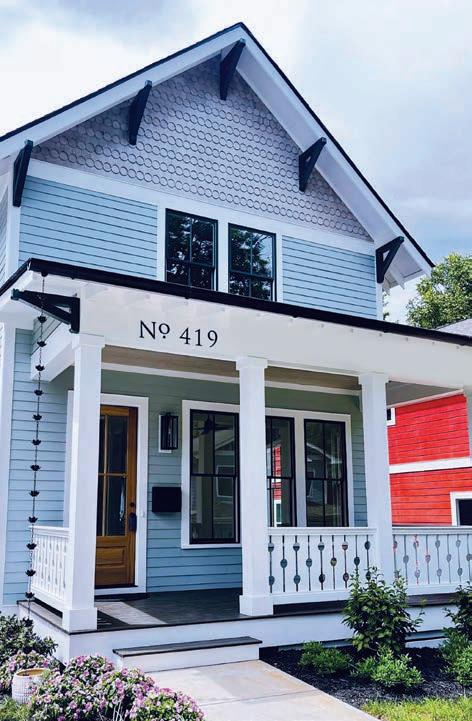



When preparing a home for sale, first impressions aren’t just important—they’re everything. According to Charlotte Realtor, Kim Parati of Savvy + Co. Real Estate, the right updates create the kind of instant impact that makes buyers fall in love the moment they step inside.
“Start with paint,” Kim says. “Fresh, neutral colors immediately make a home feel brighter, cleaner, and more inviting.” Flooring is another high-value upgrade—replacing worn carpet or adding hardwood instantly elevates the sense of quality. Even smaller changes, such as swapping out builder-grade light fixtures for statement lighting or upgrading old appliances with modern, energy-efficient models, signal that the home has been cared for and thoughtfully maintained.
Kitchens and bathrooms, however, can give you the most value for your money. These are the spaces where buyers picture themselves living every day, and fresh updates here create a sense of ease and confidence. Move-in ready kitchens and baths don’t just add beauty—they encourage offers. With trusted partners like Avid Painting & Home Remodeling, sellers can upgrade these key areas with artistry and design touches that make their home stand out in Charlotte’s competitive market.
Behind every successful sale is a partnership rooted in expertise. Kim offers the strategy; Avid provides the craftsmanship. Together, they help Charlotte homeowners showcase properties that attract buyers, stand out, and sell with both style and speed.


Above: Small Talk, 2024, acrylic paint and collage on pieced and machine-stitched fabric, 12”x12”
Right: Central Medallion, 2024, acrylic paint and collage on pieced and machine-stitched fabric, 36”x36”

can better reflect her “headspace,” she says, “and then the imagery: I understand better what it wants to be.” She can visualize how paint and collage will eventually come together upon these sewn surfaces.
“The visual movement of the pieces feels like the big strokes, and the collage will be how I refine them, add nuances or cover things that need to be pushed back down. The paintings become more refined. I begin to understand how to contend with the edges.”
The studio where she works, next to her house in rural Climax, is about 14 miles south of Greensboro. It is a color-jangled, layered collage of a space, overflowing with textiles, history, tradition, mysticism, books, paint and threads and fabrics of every imaginable color, pattern size and shape.
What’s outside — the fields and trees and open expanse of nature — is just as important.
“I live out in the country, and walking has been very important to me for my whole life. Walking on country roads, being in a beautiful landscape, has always been a touchstone,” she says.
Lately, Campbell Thomas has been trying to create “landscapes” of a different sort.
“What would it be to create landscapes that are suggestive of our interior landscape? How do we create spaciousness for ourselves internally? I’ve been thinking about inhabiting a body, and what it means to inhabit a body that feels somehow spacious internally.”
The fractalized nature of her paintings, and the way they often begin in the center and move out to the edges, is her way of representing that phenomenon.
Navigating dichotomies fuels other types of her work, too. The
line where quilting ends and painting begins is one more puzzle to ponder, as is the difference between a painting (or, her version of a painting) and a quilt (a distinct form of art which she also makes).
It’s something she’s often asked about, and something she thinks about a lot. But even as piecing and sewing has become a more comprehensive part of her painting process, she has no doubt that what she makes are paintings.
“My orientation as an artist is born in paint, absolutely, and the framework I still operate within has matured and evolved from an understanding of paint as a material,” she says. “That continues to inform everything.”
That dialogue began many years ago with her mother, who taught her how to quilt. But it extends through her family tree, to her grandmother and great-grandmothers — makers, stitchers and quilters all. Campbell Thomas has their names listed on her studio wall as inspiration and as a reminder of her heritage. The art journals she carefully keeps are bound with cloth covers made by her mother, who sends her a regular supply.
In these journals, she examines her process and her purpose. Abstraction, she says, allows her to say things she can’t with more literal or figurative types of work.
“I’m really fascinated with my sense that there is more to the world than what we can see, and of course that starts to tap into realms of the spirit,” she says. “On the one hand, I’m engaging in this intensely material endeavor — through paint, through fabric. But there’s also this way that this engagement, which is now well over 20 years for me, is a way into spirit.” SP
Liza Roberts is the author of Art of the State: Celebrating the Art of North Carolina, published by UNC Press.





Cedar chests through the ages
by Andrea Nordstrom Caughey
Nearly every home has a command center, a place where moms and dads, spouses and singles navigate the day. I call mine “The Situation Room,” a small den in the front of the house flanked by three arched windows. When sitting on the sofa, facing one certain direction, I can see nothing but trees, broken up by the occasional dog walker or children riding their bikes in circles in the cul de sac.
Today my focus is right in front of me, something I never really thought about until today. I use it to rest my feet or prop a laptop or stacks of books I am reading. Inside are layers and layers of crocheted tablecloths, baby clothes, flags, bits of embroidery, scuffed-up baby shoes too sweet to toss. All are enveloped in the sweet smell of cedar, the lining of this trunk.
The hope chest belonged to my mother; my father gave it to me upon her death. Also called a dowry chest, cedar chest, trousseau chest or glory box — or perhaps “bottom drawer” (putting one drawer aside in a chest of drawers in the U.K.), these sturdy pieces of furniture have been popular for centuries.
Unmarried women used them to store clothes (maybe a special dress), towels, quilts and linens prior to marriage. The collection of a trousseau was a coming-of-age rite until the 1950s, a step between courtship and engagement.
While hope chests were popular throughout the U.S., they had special significance in the South, a hub of furniture manufacturing until the late 20th century. One of these companies was Lane Furniture, maker of the popular Lane Hope Chest. Early ads of the 1920s positioned the piece as the true starting point for a home. During World War II, the company encouraged soldiers to send
a chest home for their future brides. Today, several custom North Carolina furniture makers still fashion them, including Patterson’s Amish Furniture in Morganton and Taylorsville Crate.
Not only were the chests handed down through generations, but their contents became a time capsule of sorts — special garments from ancestors and prized handiwork that would never be crafted again. Depending on the era (some examples date back to the 1500s) and geographic origin, the chest could be plain, carved or, like mine, painted in decorative folk art — a nod to my German and Scandinavian heritage.
Amish Handcrafted suggests 18 “creative uses” for hope chests, from coffee table or TV console to filing cabinet or plant stand — even a cooler for drinks.
“Clients often seek innovative storage solutions, and hope chests or blanket chests, beautifully fulfill this need,” notes Charlotte interior designer Wanda Horton. One client’s small family chest became a charming focal point in a cottage-style guest room, enhanced with a cushion and pillows for cozy seating while providing practical storage for linens. Vintage chests can transform into coffee tables for storing seasonal pillows or stylish storage in mudrooms for shoes and boots. Even if you don’t have a hope chest in your family, now might be a good time to start a modern version. Any generously sized vessel will do, even an old leather suitcase or enormous covered basket. Hand-picked letters from loved ones, journals, maps and postcards, sketchbooks, recipe cards, cherished books, and anything that offers you future inspiration are perfect contents. That way, hope will firmly settle in your home, as it did for my mother and all the women of her time. SP
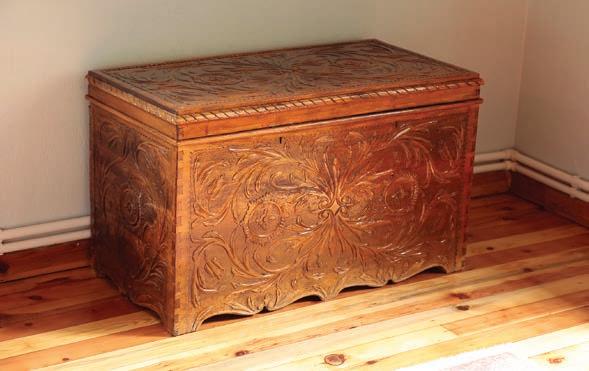



More than mom’s night out: A new generation embraces the beloved tile game.
by Ken Garfield

Ithought my lasting image of mahjong would be my Grandma
Betty playing at Shorehaven Beach Club in the Bronx, New York, some 60 years ago.
I was wrong. I have a new lasting image. Six kids, ages 6 to 12, are gathered around a mahjong set. Together, they are happy to explain why this exotic game invented in 19th-century China, introduced to America by immigrants in the 1920s and embraced years ago by Jewish women, has found a home among children and youth around SouthPark and beyond.
The only difference between Grandma Betty and 6-year-old Eliza Butler is that one smoked during her games and the other doesn’t. However, as Jack and Jillian Butler’s daughter so succinctly put it, there is a common goal. “Winning.”
Mahjong clearly has expanded from the Borscht Belt bungalows and resort hotels of upstate New York to, well, everywhere.
In April, Forbes wrote that the game is powerful enough to take on societal forces: “In an era where digital burnout and loneliness are rising, mahjong offers a tangible antidote.” The National Mah Jongg League (there’s more than one way to spell it) has 350,000 members. Charlotte’s Jill Graham, who teaches the game through her Queen City Mahjong business, gave 736 lessons in 2022. She’s on track for 1,200 lessons in 2025.
Women still dominate. But the fact that there’s a “junior” version says a lot. The four SouthPark area moms who jumped at the chance to scoop up their kids and sing the praises of mahjong agree. It won’t be long before school mahjong clubs
compete with other extracurricular activities for participants.
For the uninitiated, the game is played with 144 tiles, each one a little work of art. Think rummy. The goal is to create “four melds and a pair,” or as one of the moms put it, “Complete a line.” For more details than this, go online or take a lesson. We need to get to the kids.
Eliza already told us why she enjoys the game. Let’s hope the mahjong Gods protect her from counting on a payday when she wins. Like most modern-day pursuits, you can bet.

Rowe Wilson, 8, likes mahjong because he can play with his parents, Ellen and Scott Wilson, and 11-year-old sister, Miller. Miller enjoys the game even if she feels the need to get up and do a handstand during a match. A kid can only sit for so long. (FYI, Rowe and Miller are two of the writer’s four grandchildren.)








Danielle and Michael Altieri’s three boys – Jackson (12), Holden (10) and William (7) – all play. Their mom learned first, then in her best pleading voice asked the boys, “Will you play with me?” They said yes.
Eliza and 6-year-old Addie Rose, daughter of Jordan and Schuyler Reardon, are friends. One Saturday night while the men and boys were at a Charlotte FC soccer game, the mothers and daughters sat at the dining-room table. At one end, Jillian and Jordan played mahjong over a glass of wine. At the other end, Eliza and Addie Rose played over a glass of milk.
It’s more than fun and games. (The kids couldn’t talk about this part. They were busy lining up tiles and knocking them over dominoes-style.) The moms agree that mahjong and other games played by kids, from UNO to Yahtzee to Rummikub, come with meaningful side benefits.
You’re not just staring at a screen.
You have to master the rules of a complicated game.
You must focus your attention.
You get to be with your family, handstands and all.
You can talk while playing, not just about the game but about why Mom won’t let you walk around the mall with your friends, unchaperoned.
What else in this world can claim all that?
I wish my Grandma Betty was here to see it. SP
Ken Garfield is a freelance writer and editor in Charlotte.







Notable new releases compiled by Sally
Brewster


The Book of Luke by Lovell Holder
Following the car accident that ended his football career and left his body scarred, 22-year-old Luke Griffin joins the cast of “Endeavor,” a new competition-based reality show that pits tabloid darlings against one another in tasks of endurance and problemsolving. At first, he thrives, effortlessly forming friendships and even a romantic relationship he thinks will last a lifetime. But soon a series of betrayals leads to irreversible tragedy, changing the course of his and his fellow contestants’ lives forever. Ten years later, Luke’s world looks very different: He is now a father of two and the stay-at-home husband to America’s only openly gay senator. When his husband’s serial cheating is exposed, Luke impulsively joins the cast of a new season of “Endeavor” in a desperate bid to earn some fast cash. Back on set, he is confronted with everything he tried to leave in the past: bitter rivalries, shattered friendships and crushing guilt. Holder, a filmmaker, is a Charlotte native; The Book of Luke is his debut novel.
Dog Show poems by Billy Collins
Billy Collins’ Dog Show celebrates the joy of our canine best friends, honoring the love we feel for the animals who play such vital roles in our lives. In 25 poems, Collins distills the many ways dogs warm our hearts, from the happiness we experience as we watch a dog run unencumbered by our burdens, to the silliness of cradling a dog in our arms as we step on the scale together. Turning his inimitable eye and ear to the complexities of dog behavior, Collins ponders all that these winning creatures give us and what we learn from them about ourselves.
Cursed Daughters by Oyinkan Braithwaite
When Ebun gives birth to her daughter, Eniiyi, on the day they bury her cousin Monife, there is no denying the startling resemblance between the child and the dead woman. So begins


the belief, fostered and fanned by the entire family, that Eniiyi is the actual reincarnation of Monife, fated to follow in her footsteps in all ways, including that tragic end. There is also the matter of the family curse: “No man will call your house his home. And if they try, they will not have peace …” which has been handed down from generation to generation, breaking hearts and causing three generations of abandoned Falodun women to live under the same roof. When Eniiyi falls in love with the handsome boy she saves from drowning, she can no longer run from her family’s history. She seeks answers in older, darker spiritual corners of Lagos, demanding solutions. Is she destined to live out the habitual story of love and heartbreak? Or can she break the pattern once and for all?
Margaret Atwood
“Every writer is at least two beings: the one who lives, and the one who writes. Though everything written must have passed through their minds, or mind, they are not the same.”
Raised by ruggedly independent, scientifically minded parents, Atwood spent most of each year in the wild forest of northern Quebec. This childhood was unfettered and nomadic, sometimes isolated but also thrilling and beautiful. From this unconventional start, Atwood unfolds the story of her life, linking seminal moments to the books that have shaped our literary landscape, from the cruel year that spawned Cat’s Eye to the Orwellian 1980s Berlin, where she wrote The Handmaid’s Tale. In pages bursting with bohemian gatherings, her magical life with the wildly charismatic writer Graeme Gibson and major political turning points, we meet poets, bears, Hollywood actors and larger-than-life characters straight from the pages of an Atwood novel. SP
Sally Brewster is the proprietor of Park Road Books, 4139 Park Rd., parkroadbooks.com.
Experience the next level in luxury real estate when you partner with us.











How I learned to look up and live more fully by
Jim Dodson
November is the month I take stock of the year’s happenings, the ordinary ups and downs as well as the unexpected challenges and graces that come with being alive and kicking in 2025. This year, however, I’m looking back a bit further.
Two years ago, seemingly out of the blue as my golf buddy Patrick and I were about to set off on a golf adventure across southern England, celebrating our mutual 70th birthdays and 60 years of friendship, I was diagnosed with prostate cancer. Talk about a trip buzz killer.
Naturally, I was surprised to discover that I was one of a quarter million American men who annually develop this disease. But perhaps I shouldn’t have been.
My dad, you see, discovered his prostate cancer at age 70. He chose to have his prostate surgically removed and went on to live a productive and happy life for the next decade. My nickname for him was “Opti the Mystic,” owing to the extraordinary faith and unsinkable optimism that carried him to the very end.
A few years later, as I was completing work on my friend Arnold Palmer’s memoir, A Golfer’s Life, the King of Golf was also diagnosed with the disease. Likewise, Arnie had just turned 70. He went straight to the Mayo Clinic and had his prostate removed. He lived a full life, reaching 87 years.
Experts say that most prostate cancers occur in men without a family history, though they concede that there may be a genetic factor involved. In retrospect, I like to think that I was simply destined to follow the leads of the two men I admired most — a unique medical case of “like father, like son,” plus his favorite boyhood sports hero.
Joking aside, I chose a different treatment path than my dad and Arnie because, as I learned, there have
been tremendous medical advances since their dances with the disease, providing modern patients a much greater chance of living out their natural life expectancy. Instead, I chose six weeks of targeted radiation therapy followed by 24 months of a relatively new “super drug” my oncologist Dr. Gary Sherrill called “the Cadillac of prostate treatment.”
While discussing treatment options, I quipped to Lester Borden, a friend and fellow golfer, that I hoped to publish at least three more books on golf before I exited the fairways of life and someday to shoot my age, the quest of every aging golfer. I also assumed that the golf trip to England was now out of the question.
Lester smiled. “You’ll have three books and maybe more,” he said. “Meanwhile, the best thing you can do now is to go play golf with your buddy in England and have a great time. That’s the best medicine.”
So, off we went. And though it turned out to be the wettest week since the Magna Carta, Patrick and I had a wonderful journey seeing old friends and playing 18 nine-hole matches through howling winds and sideways rain over seven of Britain’s most revered golf courses. Somehow, amazingly, our roving golf match wound up being tied — in retrospect, perhaps the perfect ending and just what the doctor ordered. My prostate problem hardly entered my mind.
During our last stop at a historic club called Westward Ho, we had a delightful lunch (perhaps for the last time) with our dear friend, Sir Charles Churchill. A legend in British golf circles, Churchill, 90, reveled in our soggy tales of a golf match nobody won. The real winner, Charles reminded us, was our enduring friendship.
***

As anyone who makes the cancer journey understands — or quickly discovers — optimism and faith are essential



tools in the fight against this merciless disease.
Upon our return, I resolved to spend the rest of my days with more good humor and a deeper gratitude for the life and work I’ve enjoyed — along with an awakened empathy for others who aren’t as fortunate.
The tools in my kit include a keen (if somewhat private) spiritual life that I exercise every morning when I chat with God under the stars. Plus, I often ask his (or her) advice throughout the day, especially when I’m watching birds at the feeders in early morning or late afternoon.
One of the surprising gifts from this period was a song I heard by chance — or maybe not? — called “I See the Birds,” by songwriter Jon Guerra. I was stuck in traffic, late for a lunch date and stewing over the insane way people drive these days, when this incredible song mysteriously popped up on my music feed.
I see the birds up in the air. I know you feed them. I know you care. So won’t you teach me how I mean more to you than them. In times of trouble be my help again.
By the end of the song, I was fighting back tears. That song became the theme of my two-year journey back to health. I still listen to it at least once a day.
I also turned to the timeless wisdom of the old friends who line my library bookshelves.
“Don’t waste your life in doubts and fears,” advised Ralph Waldo Emerson, one of my favorite non-golfing heroes. “Spend yourself on

the work before you, well assured that the right performance of this hour’s duties will be the best preparation for the hours or ages that follow it.”
With that guidance, the work before me during my cancer journey included the pleasure of publishing my most rewarding book and finishing a landscape garden that I’ve worked on for a decade. I also received a new left knee that might someday improve the quality of my golf game.
Best of all, we learned that my daughter, Maggie, is expecting a baby girl, due Christmas Eve, finally making me a granddad. Talk about a gift from the universe.
The final touch came last week when Dr. Sherrill provided the good news: “You’re doing great,” he said after an extensive checkup. “No sign of cancer anywhere. You’re good to go.”
A few days later, my friend Lester reminded me there will always be periodic follow-ups to make sure the scourge never returns. I assured him I could live with that.
In the meantime, I’m doubling down on the things I’ve learned from my unexpected journey: To judge less and love more. To thank my maker and see the birds up in the air.
Who knows? Maybe someday this budding grandpa may even shoot his age. SP
Jim Dodson is a writer in Greensboro. His newest book, The Road That Made America: A Modern Pilgrim’s Journey on the Great Wagon Road, is available wherever books are sold.





Trinity Episcopal School - the only independent K-8 school in Charlotte's center city - nurtures curious minds and engaged citizens.Students are challenged to think critically and make a difference in the world.
Admission details and Open House dates at:



















by
e’ve all done it: Holding back our real thoughts. Downplaying an achievement because we feel like we’re being too much. Shrinking back instead of speaking up. In psychology, we call this playing small, and people often do it because they fear rejection, they feel like an imposter or they want to protect themselves. Maybe someone learned along the way to not be too loud or to not make waves because it would lead to criticism, exclusion or conflict. As a therapist, I hear versions of this every week: “I don’t want to bother anyone,” “I should be grateful and not want more,” “If I show my true self, people will leave.”
The desire to be seen and valued is deeply human, yet many of us move through life hiding or minimizing ourselves. Even though this is a survival strategy, it’s not so black and white, and it’s important to understand how it impacts our self-worth and mental health.
The choices are not only “shrink and play small” versus “be loud and take up alllll the space.” Not playing small isn’t about finding the spotlight or even having the strongest voice in the room. Showing up or taking up space isn’t selfish or arrogant.
Being seen is about congruence and authenticity: Can we allow our full selves into the room, including flaws, strengths, quirks, opinions, all of it? Can we choose this over appeasement? When we do so, this allows deeper connection because vulnerability begets vulnerability. When people show up as they are, others feel they can do the same.
People who consistently silence themselves or hold back tend to have higher levels of anxiety, depression or burnout due to internal conflict. When we experience tension between our inner truth and our outer behavior, it’s called cognitive dissonance. When this happens, we also teach ourselves over time that authenticity isn’t safe or OK. Suppressing ourselves in this way can keep our nervous system in fight/flight/freeze mode.
Here are some practical tips to help us move from smallness into visibility:
1. Notice when you shrink: Pay attention to moments you minimize your accomplishments or quiet your opinions. Awareness is always the first step.
2. Challenge your inner critic: Ask: “Whose voice is this?” Often, it’s old messages from family, culture or authority figures and not your present reality.
3. Start with micro-visibility: Speak up once in a meeting, wear the bold outfit, share your feelings. Each small act builds the muscle of self-trust.
4. Regulate your nervous system: When the fear of being seen feels overwhelming, use grounding tools (deep breathing, movement or self-compassion) to signal safety to your body.
5. Redefine success: Being seen doesn’t always mean public recognition. Sometimes it’s simply telling your friend what you truly think, or saying no without apology.
I also must acknowledge the role of identity safety for marginalized communities. Being seen is not just personal — it’s political, and often survival-based. Many cultures also have different views around this. So, I’m referring to this more broadly, where there’s safety to not self-erase and to add one’s voice to the collective conversation. We are not meant to dim our lights to keep others comfortable. Your voice, your ideas, your presence are all needed, and it’s an act of courage to show up. It’s a pathway to mental wellness for you and the people around you. The world needs the truest version of each of you (and if it’s hard to get there, therapy can help!).
Juliet spoke with Summer Baruth, a Charlotte-based industrial and organizational psychologist and a global leader in human resources. Below are excerpts from their interview, lightly edited.
I studied organizational industrial psychology and comms. This


informs my goal of helping people feel seen. That’s really what it is about in my corporate world and outside.
I love how you boil it down: I help people feel seen. Mic drop.
I learned from my dad that sometimes you have to fill the space to make people feel comfortable. I would always gravitate to people on the outskirts and help bring them in, and this is still important to me. Talk to us about your mental health journey.
I became a people pleaser. I ignored it for a long time. Outwardly, I’m a bright, bubbly person and do all of these things for other people that I don’t allow others to do for me. You’ll always feel like you know everything about me, but you actually don’t because my walls stay up. It’s my own stuff and it’s really about my own insecurity that comes up in different ways, like it does for all of us. We put a lot of pressure on ourselves to be perfect. We’re taught that we need to show up authentically, but not be “too much” and not to share our hurt.
This is chameleoning/performing. Even as therapists, we know all these things and yet can realize we’re not actually being vulnerable.
I can teach others all day long. But sometimes it’s hard to do for ourselves what we get paid to teach others to do. There’s protection in it. If someone finds the loophole to get to really know me, I get really attached to those people.
It can be exhausting to gauge: What am I showing you? Who am I? Am I being authentic? So of course, it’s complicated when two people are doing this alongside each other.
Friendships for adult women can be very difficult. You may see “girl squads,” but I guarantee you they only feel close to one or two of those people. It’s rare to do this successfully, and that’s why it hurts so much when friendships end. SP
Juliet Kuehnle is the owner and a therapist at Sun Counseling and Wellness. The full interview featuring Summer Baruth can be found on Instagram @YepIGoToTherapy or wherever you stream podcasts.




It’s unlikely that a girl born in Chennai, India, would become one of the most influential social-media creators in the U.S. But that’s exactly what Vidya Gopalan, known on social media as @queencitytrends, has done. With more than 4 million TikTok followers and half a million more on Instagram, she’s turned her passion for fashion and storytelling into a thriving business, partnering with global brands like Dove, L’Oreal, Rare Beauty, L’Occitane, Walmart and Amazon.
“I started my social-media accounts with no expectations — I just thought sharing my clothes and makeup would be fun,” says Vidya (pronounced VITH-yah), who recently celebrated her 40th birthday. “It’s only been about three years since my content really took off.”
Today, she creates, edits, photographs and produces content daily. Her posts range from shopping and beauty tips to everyday scenes with her family. Authenticity is the key, she says: “I’m not selling a product. I’m sharing my life. People [relate to] me because I’ve earned their trust over time by being honest about who I am and what I like.”
I first met Vidya several years ago after mutual friends suggested we connect. I was new to Charlotte and wanted to start an informal South Asian women’s networking group after the pandemic. At the time, there weren’t a lot of content creators in our culture’s community, so I wanted to learn how she got her start.
Vidya’s journey began when she moved to the U.S. at age 6. Her family emigrated from Tamil Nadu, a state in southern India. They first settled in Minnesota, where her father finished his Ph.D. in economics, then relocated to Arizona. Each summer, they’d return to India to visit relatives in Arimalam, a village in Tamil Nadu.
As a teen, Vidya was captivated by style. At 14, she got her first job at McDonald’s to fund shopping trips.
“No one else in my family was into fashion. My dad’s an economist, my sister’s a doctor, and my mom was stay-at-home,” she says. “When I came to [the United States], I would see how people dressed, and it fascinated me. This passion was always inside me.”
Vidya enrolled at the University of Arizona as a pharmacy major but switched to business and marketing at her father’s suggestion.
“This move ultimately gave me the tools to succeed in an industry that didn’t really exist yet,” she says.
After working in corporate retail at JCPenney’s Dallas headquarters, she moved to Charlotte and married her husband Rakesh, a lawyer, in 2010. Vidya left corporate life after having her two kids, Sahana (13) and Shaan (10), and started following fashion influencers online.
“As a mom, I also wanted something for me — a creative outlet,” she recalls. “People were always complimenting my clothes and asking where I got them, so I thought putting that content on social media would be helpful. I wanted to try.”


In 2017, she launched her Instagram account — the name is a nod to Charlotte’s nickname and her love of fashion. Her first post featured a fanny pack she bought on Amazon for a trip to Cancun.
“I knew from other influencers that consistency was key, so I posted every day.” She staged her own photo shoots every Sunday, loading her family into the car with six outfits, shooting in different locations around Charlotte, and changing in the backseat. She did this for almost three years, without earning a penny.
Then came the pandemic, and with it, the explosion of TikTok. While many users posted dance videos, Vidya and Rakesh created funny parodies, which slowly gained traction.
Her big break came in 2021, when a video she filmed with her daughter in New York went viral. From there, she started posting more “mommy-and-me” content, outfit-of-the-day ideas and candid glimpses into her daily life.
“I never tried to be perfect. Some days I wear makeup, some days I don’t. I want viewers to see my real life — not just the glamorous parts.”
Vidya includes her family in her content now that her kids are older and can vocalize what and how much they want to share.
“If I asked them to stop doing their own thing to film, they wouldn’t do it,” she says. “My family content is natural and reflects what’s happening in our everyday life.”
Through example, she strives to show her kids healthy ways to consume and create content on social media. Vidya and

Rakesh don’t allow weekday screen time outside homework and interacting with friends.
“As they get older, it gets harder,” she says. “It’s really important for Sahana to have that social connection and be allowed to call and text friends. This is the world they live in — there are no landlines.”
Vidya’s relatable, unfiltered content caught the attention of Digital Brand Architects, a California-based management firm that now handles her contracts and partnerships. Still, she maintains control of the creative side.
“This is a full-time job,” she says. “You have to be motivated to make content that looks effortless. I wake up every morning thinking about what I can do today to build my business.”
Brands typically pay flat fees for collaborations, usually requiring a few stories or reels. She partners only with brands that align with her content and values.
Sometimes, her success has led to opportunities she considers once-in-a-lifetime. In 2024, she was invited to the Democratic
I’ve worked with brands I never saw myself represented in growing up. Now, I help create for them.
National Convention, where she interviewed Kamala Harris. On TikTok, the two discussed their shared Indian heritage. Other highlights include being featured on a Times Square billboard for a Rare Beauty cosmetics campaign with Selena Gomez, traveling to Bora Bora with Tarte Cosmetics, attending two Taylor Swift Eras Tour concerts (one in the front row) with her daughter and working with Dove on a nationally aired commercial. She even met Richard Branson on Necker Island.
“I’ve worked with brands I never saw myself represented in growing up,” she says. “Now, I help create for them. There are more South Asians in this space now, and we bring a fresh perspective. We also have purchasing power that brands recognize.
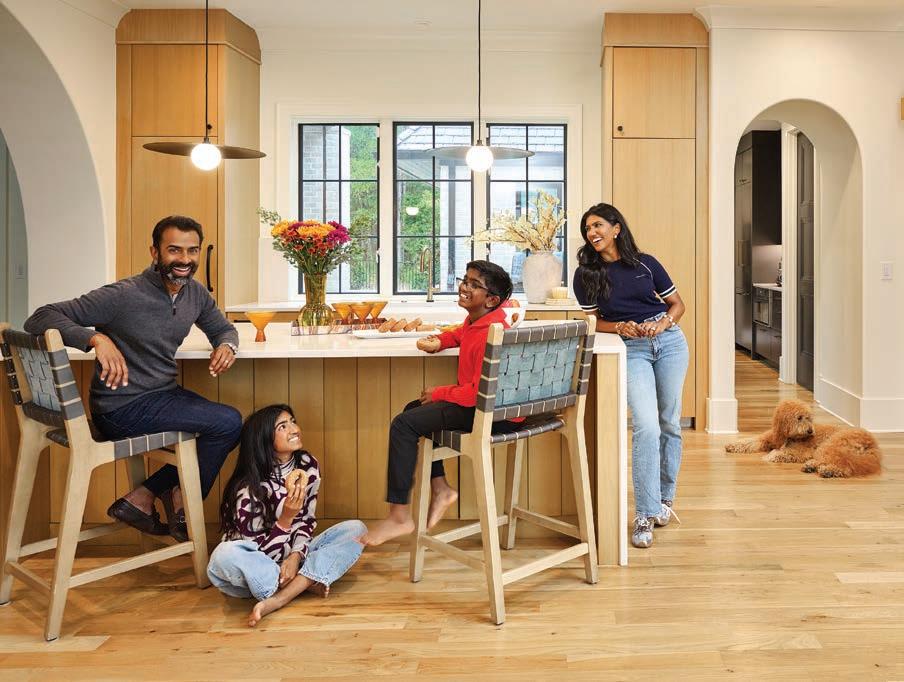
I’m more likely to buy a foundation shade from someone who looks like me and is giving me their honest opinion rather than from an ad on TV that is unrelatable.”
One of Vidya’s most meaningful projects this fall was a collaboration with New York’s Tarte Cosmetics to help design Diwalithemed concealer toppers (Diwali, also known as the festival of lights, is one of India’s most celebrated holidays). Proceeds from product sales support the South Asian Council for Social Services.
Her following is diverse, though about 90% are women aged 25–35, often early in their careers. That influences what she shares.
“When I show luxury items, I also post affordable alternatives. I don’t want anyone to feel like they must buy [expensive items] to be stylish — I’m just sharing what I like. Part of being fashionable
is a feeling, and I want people to feel positive from their purchases.”
As her success has grown, so has her collection of handbags, clothes and home decor, gifted unsolicited to her by national and international brands. The packages arrive so frequently that she leaves a cart of refreshments and gift cards for delivery drivers. She only posts about products that resonate with her and her family.
“I find that sometimes South Asians or other minorities hide being luxurious, maybe because it took a while to get here. I didn’t grow up with money, so to share my success now is important — and, I hope, aspirational,” she says.
She also receives heartfelt messages from young followers who credit her with inspiring them to pursue their dreams or try something new.
“That’s what motivates me to keep going,” she says. But being open online has its downsides, too. “People think they can say



anything about you. It’s hurtful when it’s not true. Until there’s more regulation, you have to develop a thick skin.”
Despite the challenges, she remains deeply grateful.
“I do have imposter syndrome sometimes,” she admits. “The influencer space is still so new. But with consistency, you can still break through and make a difference.”
Her parents and in-laws also recognize the magnitude of positive impact Vidya has.
“At first my parents didn’t understand this world, but they never told me not to do it,” she explains. “I think it made a difference that I was married and had financial stability from my husband when I first started. Now, they see the reach of what I’m doing as people stop them in airports or when they travel overseas and tell them ‘I follow your daughter.’”
With platforms like TikTok facing potential bans and the influencer world constantly evolving, Vidya’s future as a content creator is uncertain — but she’s OK with that.
“I’m living one day at a time. I’m still learning, still growing,” she says. “I’m just grateful that I get to be myself, express myself and make a living doing this.”
Her advice? Vidya believes every business should have a social-media presence.
“It doesn’t matter what line of work you’re in, you can create a following,” she says. “There’s no science behind success here. Just be consistent and authentic.” SP
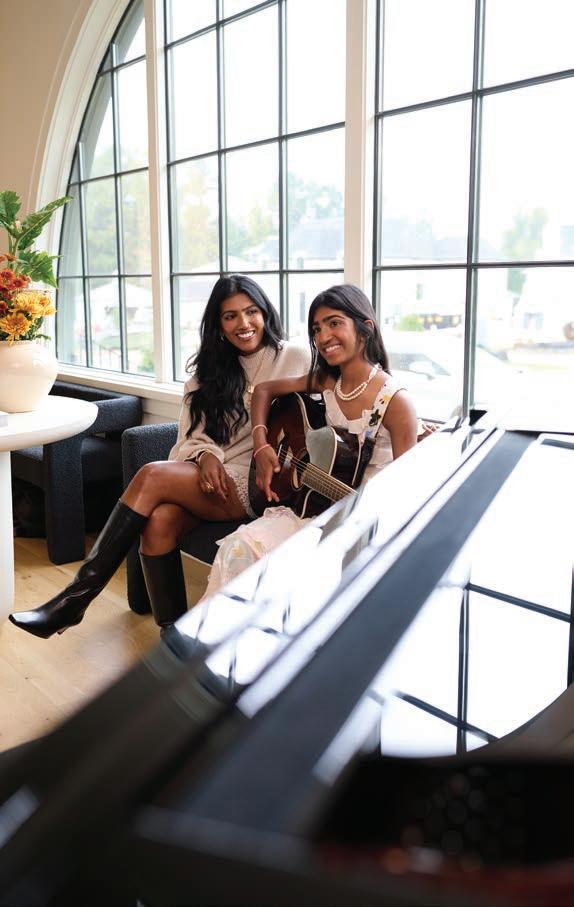
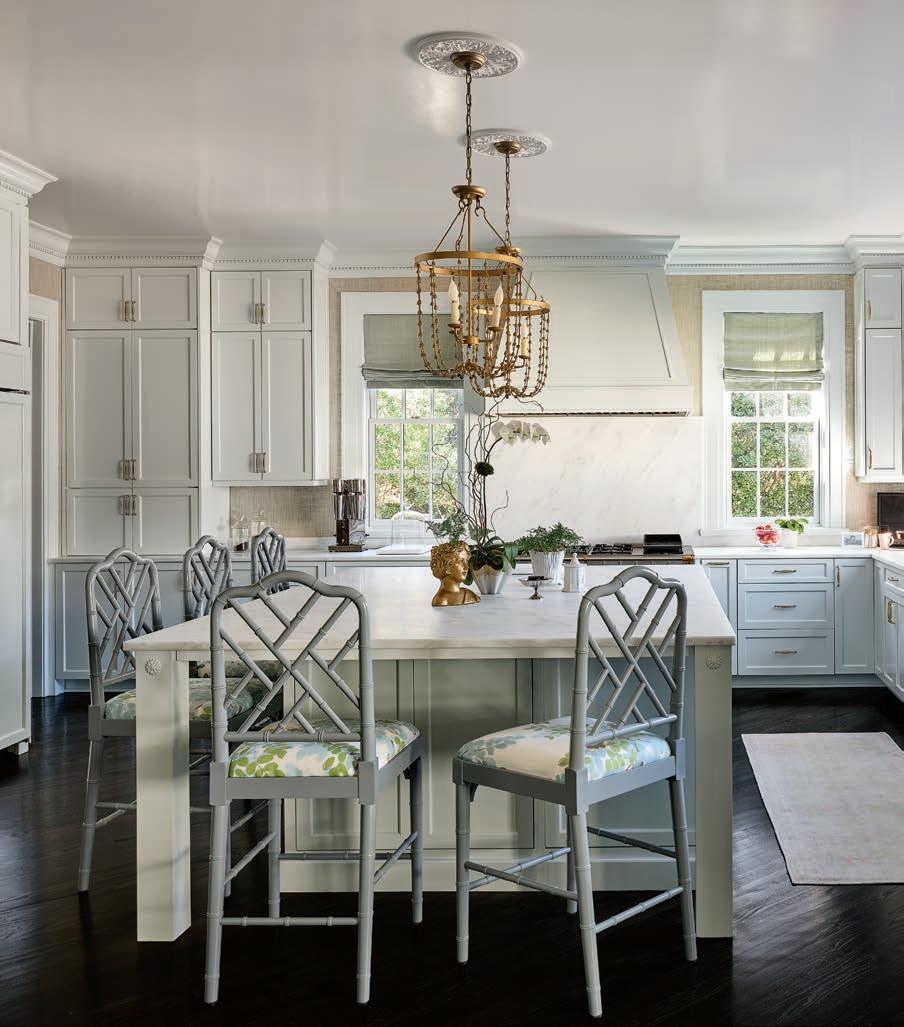

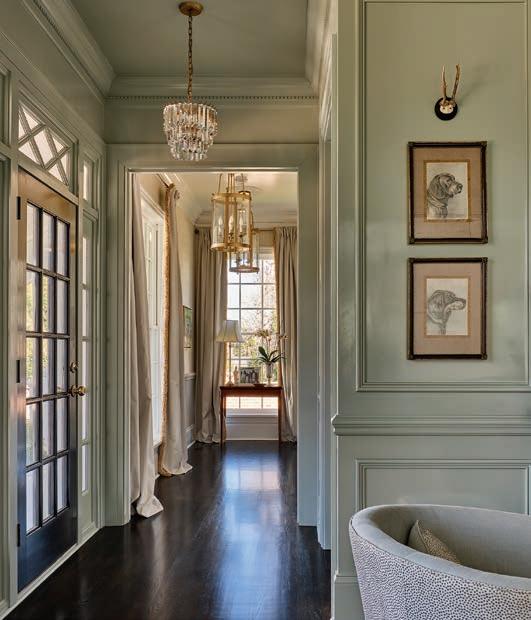
A Charlotte couple teams up with talented family members to lovingly update an historic home.


In the heart of Myers Park, Queens Road provides a picturesque scene for walkers, cyclists and commuters with its leafy trees, grassy medians and beautiful homes. One particular house — a grand white Colonial Revival gem — piqued the curiosity of Jordan and Jake Horstman. They were newlyweds and living several blocks away when they dropped by during an open house in 2008.
“I could tell it was special and was drawn to its classic structure and historical soul,” Jordan says. “After that visit, I kept my eye on the house.”
The house didn’t sell in 2008, but when it went back on the market in 2010, the Horstmans seized the opportunity to seal the deal. They moved in with their young daughter, and another daughter on the way.
Situated on a prominent corner lot, the house was built by Adelaide and Hunter Marshall Jr. in 1919 — the same year the new suburb of Myers Park was incorporated as a village. Hunter Marshall was later elected the second mayor of Myers Park, and his family lived in the home for about 70 years.
A Visual Comfort chandelier hangs from the bar ceiling, which is painted a custom high-gloss gray. Jordan considers the ceiling a fifth wall, often adding paint or wallpaper to create a cohesive and dramatic look.
Left: Jordan stores her treasured china collections in the scullery, which is painted Stiffkey Blue by Farrow & Ball.
Opposite page: Leigh Jones hand-painted the custom leopard mural in the entry hall. Jordan’s own photo vignettes of her daughters hang above a pair of Baker console tables. The grand piano belonged to her grandfather.
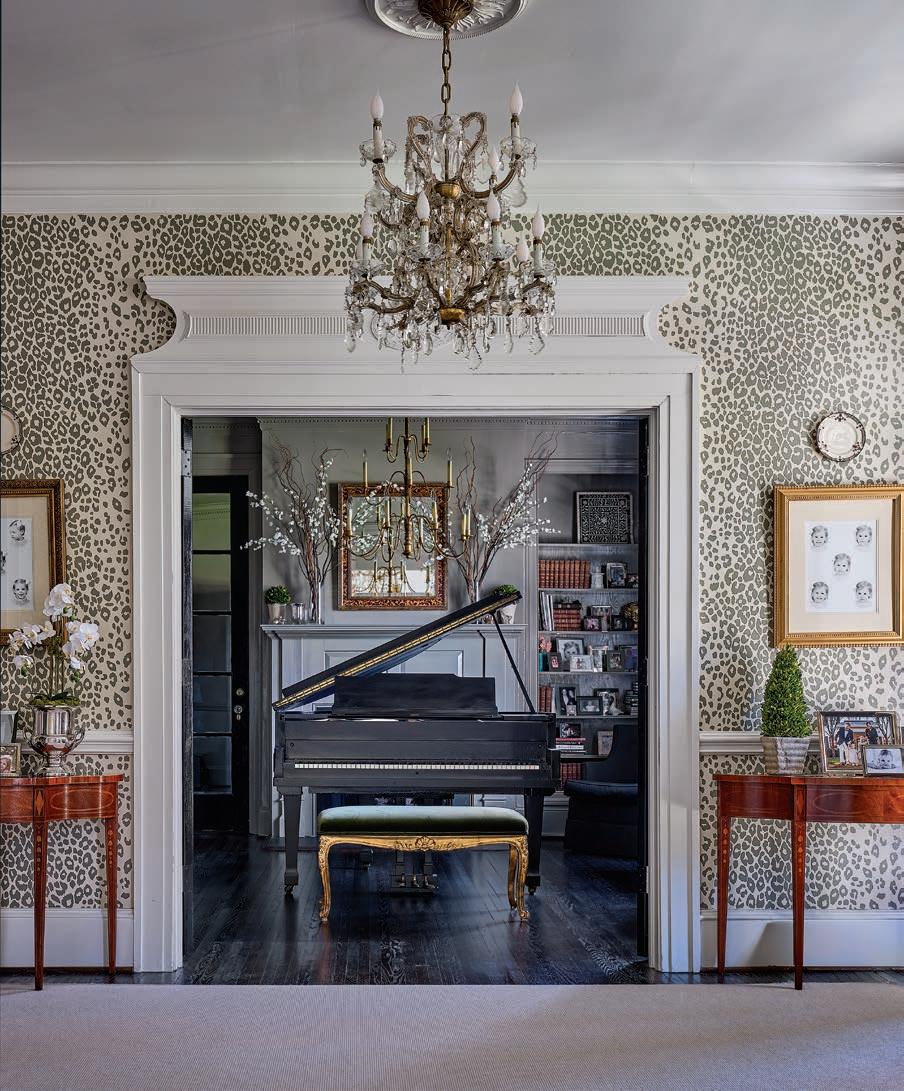



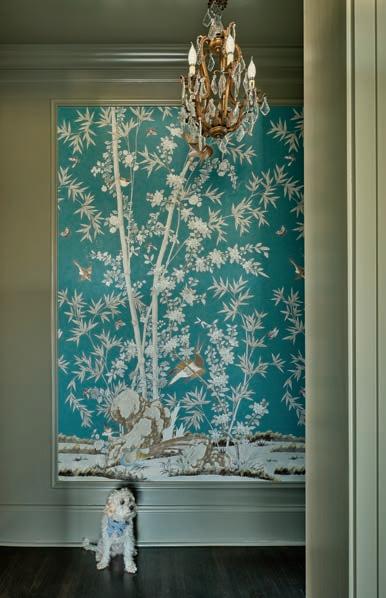

The Horstmans are the fourth family to inhabit the abode.
“We have met several of the family members who have lived here and love hearing old stories,” says Jordan. “Apparently when they built the house, the materials were carried by horse and buggy down what is now the median of Queens Road.”
The Horstmans have renovated the house twice: a smaller renovation in 2012 and a major renovation started in 2020 that took 2.5 years. Their goal was to maintain the integrity of the house and ensure the updates blended seamlessly with its early 20th-century origins.
“Our architect and builder worked closely with us to make our vision a reality,” Jordan says. “The renovations feel very authentic and honor the original style and quality of the house.”
The Horstmans engaged local architect Ryan Windt, and they hired Jordan’s brother, Will Phipps of WK Phipps, as their builder. The siblings worked side by side throughout the project, creating molding configurations, selecting lighting and paint colors, drawing hardscape and driveway plans. Every decision was considered with exacting detail.
“Will is super creative and spends almost all of his time on the jobsite versus behind a desk,” says Jordan. “We had our sibling moments of yelling at each other, but we would be right back on task the next day. Definitely a different relationship than most people have with their builder!”
Renovating an old house is not an easy feat and comes with many unexpected issues that complicate and prolong even the best-laid plans. But the Horstmans were undeterred.
“At every twist and turn, we were constantly having to come up with Plan B,” Jordan says. “A lot of heart went into it and a lot of blood, sweat and tears.”
Jordan oversaw the interior design, which has long been a passion. She was exposed to the decorative arts at an early age by her mother, Anita Phipps, an interior designer in Greensboro.
“My mom would drag me to clients’ homes, auction houses and antique stores all the time,” Jordan says. “I thought it was miserable as a child, but now I love it, and I consulted my mom for her opinion on every room in this house.”
The Horstmans initially planned to leave a space above the

Opposite
In
primary
Open Spaces wallpaper by
creates a glamorous setting in the primary bathroom. The chandelier is from Le
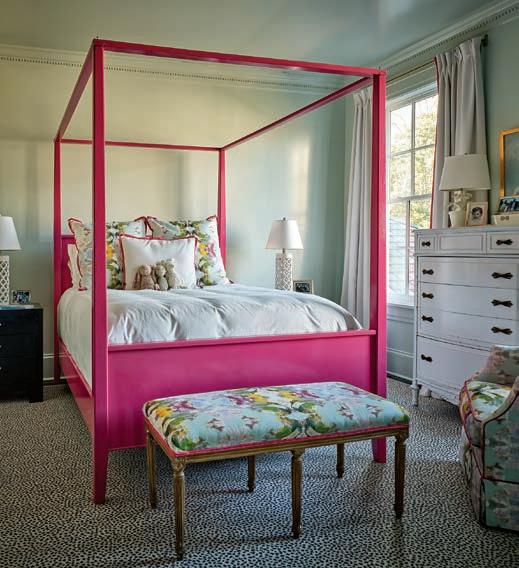

Opposite page: A canopy bed by French Market Collection is the centerpiece of a daughter’s room; walls are wrapped in a York Wallcoverings mural from Anthropologie.
The exterior of the house; old postcards and photographs offer clues to the history of the home and its former inhabitants.
garage vacant for storage, but Will convinced them to finish the area since they were already under construction. Jordan and Will, with markers in hand, drew out a rough sketch for the area on the raw wood floor and proceeded with a plan to add a full bedroom, bathroom and kitchenette.
The Horstmans had no idea what a blessing this would become. Just after they completed the renovation and moved in, Jake’s brother came to Charlotte for heart surgery, so his family moved into the garage apartment for two weeks. The proximity to Atrium Health’s Carolinas Medical Center made frequent trips to and from the hospital convenient. Last summer, an Alabama teenager seriously injured from a shark bite was airlifted to Charlotte for surgery, and the Horstmans offered the living area to her family.
Jordan’s own family rotated in and out of the space while her mother was undergoing medical treatments in Charlotte last winter.
“It really has become a ministry for us,” says Jordan. “It wasn’t planned, but it feels like such a God thing to happen, and it’s an easy way for us to help others.”
Extending this hospitality comes naturally for the Horstmans, who delight in regularly hosting family and friends. Jake enjoys cooking, while Jordan and their daughters arrange flowers and create artful tablescapes.
“Nothing makes us happier than gathering people around our dining room table to eat, pray, tell stories and spend quality time together,” Jordan says. “The best part of owning this house is sharing it with others.” SP


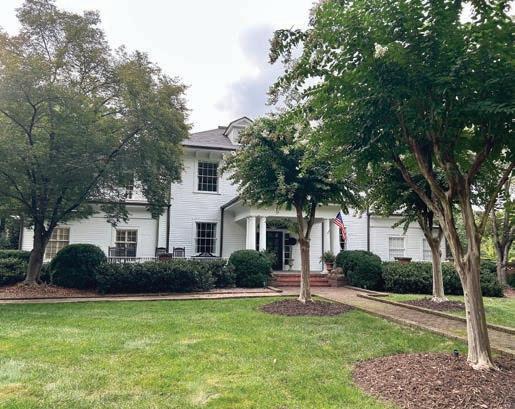


Move over pumpkin, pecan is surging as this holiday season’s new IT flavor. Year-over-year DoorDash sales of pecan-flavored food and drinks are up 28%, and pecan Snickers bars, introduced in 2024, are sticking around. This only goes to show that the rest of the country is catching up with what the South has long known: Pecan is a tried-and-true classic. And at the top of the list is pecan pie.
It’s a pie with a humble beginning, dating back to the late 19th century. It has endured since 1886, when Harper’s Bazaar published a simple description of what’s now a Southern classic. Originally a custard-based pie, it evolved with a filling made of sugar-based syrups (corn, molasses or maple) and has become a staple at Thanksgiving dinners.
While pecan pie may not have originated in North Carolina, Charlotte has been perfecting it for years. A pie is only as good as its maker, and three of the most praised pecan pies come from Andersons, The Batch House and The Crunkleton. They prove the confection is more than just a holiday dessert. Pecan pie is sweet nostalgia, a bite of comfort and full of spirit.
With the slogan “The World’s BEST Pecan Pie,” Andersons has been making its famous pie since 1958. Its origins trace back to the end of World War II in 1946, when three brothers — Jimmie, Pete and Bill — started Andersons Restaurant (formerly Mercury Sandwich Shop). After Pete and Bill left the family-run business, Jimmie sat down with Dewitt Wylie, the chef at Andersons, to create the signature pecan pie recipe that hasn’t changed in 58 years.
Jimmie’s love of pecan pie was passed to his son Gary Anderson, who started working at the restaurant as a boy, bussing tables and washing dishes.
“My dad and I had such a great relationship,” Gary says. “After

college, I just showed up, and we just started working together.” After Jimmie passed, Gary took over the business in 1979. Though the restaurant closed in 2006, the pie lives on.
Over the years, local and national celebrities who have delighted in Andersons pecan pie include Mike Love (The Beach Boys), Richard Simmons, Bob and Elizabeth Dole, and Larry Sprinkle, according to Gary. A signed photograph of Bob Hope hangs above Gary’s desk, giving thanks for receiving a pie after a performance.
And then there’s the David Letterman connection, when Jay Thomas, the late comedian who was a Charlotte DJ in the early 1970s, mentioned Andersons while telling what Letterman calls “the greatest talk-show story of all time.” Year after year, Thomas repeated the hilarious true tale involving a traffic incident and the Lone Ranger (Google it for a good laugh) on Letterman’s show. As a thank you, Andersons sent pies to Letterman, and in return, the late-night host sent tickets to his show.
Over the years, Gary credits three things with earning them devoted customers. First are the fresh, locally sourced, pecan halves that are roasted to bring out their rich, nutty flavor. The second are the pans in which the pies are baked. “We use an extra deep pan,” Gary says, allowing people to experience more of the not-toosweet filling infused with hints of vanilla. Last, Andersons shipping containers allow pies to arrive in the same condition as when they come out of the oven, Gary says.
Once it arrives, Gary recommends serving it hot or cold.
“Heat it up in the oven and add vanilla ice cream. That way it’s no fat, no calories, no cholesterol,” he jokes. Eating it cold is an entirely new culinary experience. “When I was in college, my buddies used to tell me, ‘You better not come back empty-handed.’ So I’d go back and put them in the freezer. If you haven’t tried it frozen, you’ve got to.” This brilliant, unorthodox method of eating pecan pie enhances the flavor and caramel-like quality.
1617 Elizabeth Ave., andersonspieco.com
Gary Anderson’s favorite drink with pecan pie: Milk
Favorite way to eat: Warm with a scoop of vanilla ice cream, or straight out of the freezer

Favorite way to eat: Room temperature with ice cream

The Batch House in west Charlotte is sugar, spice and everything nice. Walking in, the aroma of cinnamon and the eclectic, grandmillennial decor practically begs guests to sink into one of the plush couches and enjoy a freshly baked slice of pie.
Founder Cris Rojas’ love of food is evident. Beloved in her community and known for experimenting with recipes, Cris, aka The Batchmaker, has brought innovative twists to traditional desserts since emigrating from Honduras in 2006 when she was 19. “Food is the way I’m creative, the way that I express myself — the way that I see the world.”
As a child in Honduras she “used all of my allowance and birthday money” on food. Her passion increased as she began experimenting in the family’s pantry. “I’ve been baking since I was 8 … I [tested] everything that we had in our pantry. I saw how creative I could be with food.”
During the holidays, Cris would enjoy traditional Honduran desserts like torrejas (a flour pastry dipped in alcohol or a honey mixture), moist fruit cakes, tres leches and rice pudding with alcohol-soaked raisins. In the United States, she infuses what she learned in childhood to create twists on the classics. As a self-proclaimed “chocolate foodie,” she describes The Batch House’s Chocolate Bourbon Pecan pie as “absolutely insane.” It’s a fudgy, decadent pie that she brings each year to Thanksgiving dinner — and keeps a separate one for herself, cutting slivers off throughout the day to eat while she prepares the meal.
The inspiration behind her take on the traditional pie comes from her childhood and her love of playing with flavors.
“I love bourbon, and I love chocolate. I wanted to make it my own version.” Each pie is handmade, with a signature crinkle along the crust, a testament to the care and detail that go into each pie. The bakery makes about 700 pies at Thanksgiving.
“Food connects us all,” Cris continues. Her most heartfelt
Gary Crunkleton’s favorite drink with pecan pie: Milk, or bourbon (see pg. 90) Favorite way to eat: Old school. “I order it with a glass of milk, rather than a la mode.”

memory is of a customer who recently had lost her grandmother. Her grandmother always made pie for the holidays. When the woman ate the Batch House pie, she sobbed. “It made her feel like Grandma was still there,” Cris recalls. While a pie can’t replace beloved family members, it can evoke comforting memories.
901 Berryhill Road, thebatchmaker.com
Gary Crunkleton is a collector. Before he was known for pecan pie, he was known for his craft drinks and love of antique spirits. This passion led him and the 1957 Hospitality Group to open The Crunkleton (with locations in Chapel Hill, Charlotte and Raleigh), Rosemont, Puerta and Cheat’s Cheesesteaks. It also inspired him to spearhead the 2015 North Carolina General Assembly House Bill 909, known as the “Crunkleton Bill,” granting North Carolina establishments the ability to sell “antique spirituous liquor.”
Soon after Gary opened the original Crunkleton in Chapel Hill in 2008, he soon discovered that the food was a hit, too. The pecan pie recipe comes from 1957 Executive Chef Greg Balch, whose grandmother created it. Balch’s version includes candied pecans and homemade pecan syrup and is topped with salted caramel ice cream. The recipe is a well-guarded secret, as only Crunkleton sous chef Sarah Haqq knows the recipe.
“We warm the pie in a live, wood-fire hearth,” notes Sarah Brown, assistant general manager at The Crunkleton in Charlotte. “It’ll get just a touch of smokiness on the pie from that fire.”
“Being a pie guy,” Gary says, “I’ve had my share of great pies throughout the years. The key lime pie from CQ’s Restaurant down in Hilton Head comes to mind. The chess pie from The Angus Barn in Raleigh is a good one. I once had a strawberry and rhubarb pie down at Commander’s Palace in New Orleans, decades ago, that I can still taste. In my humble opinion, the pecan pie from The Crunkleton fits right up there with all of them.”
1957 E. 7th St., thecrunkleton.com
For a modern take on a classic, try pecan pie with a spirit.
“When I do my bourbon tasting, I often talk about the basic flavors as being similar to pecan pie,” Gary Crunkleton says. “There’s the burnt sugar, a dry nutty flavor like pecans, vanilla notes and the sweetness, which comes from the corn. So, a low-proof bourbon matches well with a nice slice of pecan pie.” The low-proof spirit helps create a balance between the pie and the liquor, he says.
“The sweetness from a bite of our pecan pie followed by a small sip of a low-proof Old Grand-Dad or Wild Turkey bourbon pairs fine,” Gary says. “If you really want to take this pairing to a higher level, then pairing our pie with a pour of an antique bourbon amplifies the comparable flavors.”
• Established in 1882, Old Grand-Dad has a high-rye mash that brings out a strong, spicy, cinnamon-enhanced flavor with caramel, vanilla, oak and citrus elements. The aging process and “alligator” barrel char evokes smoky notes and enhances the flavor palette.
• Founded in 1869, Wild Turkey brings a spicy, bold, toasted-oak profile, complemented by notes of vanilla, caramel, cinnamon and allspice. Batches have been known to have layers of cherry, orange zest, leather, toffee and pepper.
• In North Carolina, spirits aged more than 20 years that haven’t been opened or in production carry the classification of antique spirituous liquor. These rare liquors are unique and highly sought-after, with many having been made with lost recipes. Antique bourbons embody deeper, richer, more complex flavor profiles not found in recent releases.


HARPER BAZAAR’S PECAN PIE recipe from 1886
“Is not only delicious, but is capable of being made a ‘real state pie,’ as an enthusiastic admirer said. The pecans must be very carefully hulled, and the meat thoroughly freed from any bark or husk. When ready, throw the nuts into boiling milk, and let them boil while you are preparing a rich custard. Have your pie plates lined with a good pastry, and when the custard is ready, strain the milk from the nuts and add them to the custard. A meringue may be added, if liked, but very careful baking is necessary.”
— Pecan Pie, Harper’s Bazaar, February 6, 1886 (p. 95)
Eleanor Roosevelt, First Lady of the United States and wife to Franklin D. Roosevelt, spurred a resurgence of pecan pie when her recipe was published in the Hollis Pantry Secrets Cookbook in 1949. Her version has become one of the most popular.
INGREDIENTS:
3 eggs
1 cup brown sugar
1 tablespoon butter
1 cup corn syrup
1 cup pecans*
1 teaspoon vanilla
a few grains of salt
1. Cream butter and sugar and add syrup, well-beaten eggs, salt and vanilla. When mixed, add the finely chopped pecans and turn into a pie plate lined with pastry.
2. Bake in a modern oven until firm.
*Walnuts may be substituted. SP






From pawns to powerhouse: The fast-growing Charlotte Chess Center hosts the 2025 U.S. Masters over Thanksgiving weekend. by Michael J. Solender photographs by Richard Israel
As he neared graduation from UNC Charlotte in 2014, economics major Peter Giannatos faced a pivotal crossroads: pursue a stable career in banking and finance, or take a bold leap into a far less conventional — and far less lucrative — arena, chess.
Giannatos, 34, learned the game at age 7 from his brother. By 13, he was competing in tournaments and soon earned an “expert” rating from the U.S. Chess Federation (USCF), the governing body of chess in the United States. In 2017, he achieved the title of FIDE Master (awarded by the International Chess Federation), began teaching, and emerged as an active advocate for the game.
“I evaluated whether I could make chess my career,” Giannatos says. “I was passionate about it and saw an opportunity in Charlotte to take the Queen City Chess Association — a nonprofit I co-founded in 2007 with a colleague — to the next level through a sustainable business model.”
Backed by a clear business plan built on memberships, classes and tournaments — plus seed money from local supporters and his own investment — Giannatos launched the Charlotte Chess Center (CCC) in 2014. Banking would have to wait.
“I decided to take a nontraditional approach in building a for-profit chess club with a structured business model,” Giannatos says. “Most clubs and tournaments nationwide are organized by devoted volunteers, not run as sustainable businesses.”
His plan laid out how revenue from membership fees, programs and events could sustain the club and ensure long-term growth. In this way, CCC became both a community hub and a viable business, bridging passion with professionalism.
Over the past 11 years, Giannatos and his team have built CCC into a nationally recognized success story. Today, the center has more than 1,500 active members and employs 55 staff, including four grand masters who serve as coaches and instructors. CCC

operates from two main locations, its south Charlotte headquarters near Pineville and a north Charlotte site between Concord and Huntersville. The center also runs classes at satellite facilities in Fort Mill, South Carolina, and Waxhaw.
For adults, CCC hosts open chess nights, casual meetups at local breweries like Resident Culture in Plaza Midwood, rated tournament play, lectures, classes and coaching. For youth, the center offers before- and after-school programs at more than 60 schools across four districts, plus several private schools, reaching nearly 2,000 children. CCC also runs summer camps and youth tournaments.
“We don’t have to convince parents that chess is good for their kids,” says Phil Armstrong, the center’s marketing director and school program mentor. “They believe that before they walk in the door. But the reality is to really get the benefits, kids must play competitively. Studies show students active in competitive chess demonstrate higher math and reading scores. The game strengthens concentration, discipline and self-esteem. We see this skill development every day.”
When Azima Collins moved to Matthews from Columbia, South Carolina, during the pandemic, she wanted an indoor activity to challenge her young sons intellectually. Collins, a CMS substitute teacher, has five children, four sons ages 9 to 14 and a 2-year-old daughter.
“I learned chess at a young age but had no one in my family or nearby to play with,” Collins says. “I taught the basics to my boys. They understood the general concept, but I wanted them to gain a deeper understanding and be able to play with each other during Covid. I found the Charlotte Chess Center, enrolled them in online classes, and as Covid wound down, we became regulars.”
Her sons quickly fell in love with the game, drawn to its one-onone competition, strategic depth and their own rapid progress.
“What I love about chess,” Collins says, “is that physical size, color, background — none of that matters. Winners come in all shapes. That’s important to me. They also learn how to lose, take responsibility and show humility.”
Today, Collins’ boys compete regularly in tournaments and attend programs three to four times a week. “My two oldest have advanced so much they’re on an Elite team, where they train with grand masters and even get special jackets with their names across the back. They’re proud to wear them — and to let me and all their friends know chess is cool.”
With annual revenue topping $2 million, the Center has proven a chess club can thrive as both a community hub and a sustainable business.
In 2018, less than five years after its founding, the U.S. Chess Federation (USCF) named Charlotte “Chess City of the Year.” A year later, it recognized CCC as “Chess Club of the Year.”
“I’d argue we’re more worthy of that recognition now than ever,” Giannatos says.
He points to USCF data showing Charlotte ranks first or second nationally in active rated tournament players among affiliate clubs with physical locations. In 2024 alone, CCC organized more than 400 USCF-sanctioned tournaments.
Giannatos also notes that more than 3.5% of USCF’s active membership plays in Charlotte annually, with more than 1,800 non-resident players competing here.

“To increase your individual rating, you must play higher-rated opponents, which often means traveling to larger cities,” he says. “We’re working to make Charlotte that destination.”
Cementing Charlotte’s status as a chess hotbed is CCC’s hosting of the 2025 U.S. Masters Championship, the official national championship sanctioned by the U.S. Chess Federation.
Nearly 300 highly rated players will compete in the nineround tournament, including several dozen grand masters and international titleholders. This marks the fifth time CCC has hosted the prestigious event.
The tournament runs Nov. 26-30, over Thanksgiving weekend, at the Hilton Charlotte University Place, with multiple top 50 world-ranked players expected to compete. Prizes totaling $25,000 will be awarded. Running concurrently is the six-round North Carolina Open, Nov. 28-30, with $12,500 in prize money at stake.
Auxiliary events include the $2,000 Blitz, a single-day K-8 tournament that’s open to anyone, and free game analysis, lectures and blitz challenges with VIP grand master Yasser Seirawan.
“It’s a point of pride for us to have grown Charlotte into one of the top chess cities in the country,” Giannatos says. “Charlotte Chess Center works hard to enhance our community through chess. We’re focused on growing the game here and providing opportunities for both enthusiasts and newcomers. I feel like we’re just getting started.” SP















ICaroline Simas
Charlotte creatives take their talents overseas. The best part: We’re all invited.
by Michelle Boudin
f you’ve got the travel bug but may not have a travel companion, no worries. Lots of Queen City creatives, from acclaimed artists to popular chefs, are leading guided tours and retreats overseas, offering curated workshops and experiences with a little something for everyone. We spoke with three Charlotte women who are capitalizing on the group-travel trend, allowing solo travelers to connect with like-minded individuals with an itinerary that’s all planned in advance. All you need is a passport — and a sense of adventure.

Caroline Simas, artist
Artist Caroline Simas is perhaps best-known for her custom murals, creative workshops and stationery line that ultimately flourished as a result of a successful licensing deal. But these days, the mother of four pours her energy into creative retreats that she says are an extension of the art classes taught in her studio.

“I got so much positive feedback from women who felt like they were unleashing the artists within. They were rediscovering the child — like, you know how you create as a child ... when you thought that you were the best artist on the planet? That creative joy within is what I love, and seeing the lights come on.”
She led her first retreat several years ago but ramped up the offerings in 2022, after her youngest kids, twin girls, left for college.
“I’ve had women who have not picked up a paint brush since kindergarten,” Simas says. Unlike some other art retreats, no experience is required. She describes her retreats as a nonjudgmental setting for all levels, even beginners. “That’s kind of my niche.”
This year, she hosted groups of women in Canada, France, Italy and Connecticut. Next year, she’ll be teaching in Greece, Spain, Portugal and Canada.
“I partner with different companies to do these retreats, and we merge the love of creative food and wine with art.” She says it’s the combination of everything she has come to love over the years.
Simas grew up in Fort Mill, South Carolina, went to college in Charleston and came back to Charlotte to raise her family. An education major and self-taught painter, Simas taught elementary school and children’s art lessons during the summers. She started a business painting custom indoor murals, children’s furniture and more, before launching Multiple Blessings, her stationery
Tillie Kerna, personal chef
Tillie Kerna was inspired to host international culinary tours by acclaimed Asheville chef Katie Button, who leads Mediterranean culinary tours with her husband, Felix Meana. “I felt like I could do that in France,” says Kerna, who is known professionally as Chef Tillie.
Kerna honed her craft in Valencia, in northern France near Belgium, and has worked as a personal chef in Charlotte for more than 15 years.
“I wanted to share that love that I had for the culture of food and everything that is so deeply instilled in me.” Kerna plans to take groups to different regions of France each year, offering an immersive experience built around the food and wine of the area. Kerna hosted her first sold-out group trip to the Nouvelle-Aquitaine region this October, beginning the journey in Bordeaux. She’s currently planning a trip to Provence in fall 2026.
“My goal is to really go off the beaten path, away from the touristy areas, and really dive deep into the culture and the food of the regions, because they’re all so different. You’ll see some of the places that you wouldn’t see if you were a tourist.”
Like many group retreats, Kerna plans to limit the group size to about 14 people to make sure participants have a chance to connect and enjoy an intimate experience. There will be cooking classes, of course, winery visits, and dining in Michelin-star restaurants in what she calls down-to-earth elegance.
“It’s not stuffy luxury, it’s more that you’re comfortable, but you’re gonna get the experiences that you would expect on the luxury tour.”
Trips are open to men and women, with varying levels of expertise in the kitchen. Kerna plans to partner with local chefs to teach group classes.
Closer to home, Kerna is also planning culinary tours to Asheville; Charleston, South Carolina; Seattle; and Kalispell, Montana.
brand in 2004. The greeting cards were sold in 250 stores.
Next, she licensed her art for products sold at Michael’s, Hobby Lobby, Joanne’s and Cracker Barrel.
“My art was on everything from ceramics to paper to garden flags,” she recalls. Three years ago, she grew weary of the pace of constant deadlines and designing for others, so she decided to lean into the workshops and retreats she loved so much.
Typically, she hosts three to six international retreats a year, each with about 10-16 women.
“I find that when it’s only women, the conversation changes. They want to be able to meet in the kitchen, with no bra on, in pajamas, talking and just decompressing — where they just can let go and be themselves.” Simas feels grateful she’s able to do what she loves and impact the lives of other women.
“These women come mostly as strangers, and they leave with connections for life. Over and over, I hear the stories of women who just come alive at these workshops. It’s truly unbelievable.”
The chef says she is most looking forward to the connections she knows her guests will forge.
“Food is its own language ... you don’t even really have to know the language to share a meal with someone and get to know them ... I’m a huge believer that if we could just gather some of the world’s leaders around the table and break bread, we could probably solve a lot of the world’s problems just simply that way.”



Meredith Dean, social media and branding expert
Meredith Dean has been a world traveler for as long as she can remember.
“I’ve been traveling since before I was a year old,” Dean says. Her father, a former Peace Corps volunteer, founded Habitat Aid Initiative, a nonprofit supporting people in western Kenya. Dean began joining him on trips to Africa when she was 10.
“My dad always said, ‘Your best education is when you’re traveling.’” That’s why the 33-year-old founder of The Dean’s List, a consulting agency focused on branding, is so passionate about bringing others along for the ride. The content creator, website designer and social-media guru says her mission in life is to uplift female- and minority-owned businesses. Now, she’s also leading retreats around the world, hoping to uplift and inspire the people who travel with her.
“When you get out of your comfort zone and travel overseas, that’s when you make the most important connections,” Dean says. “I think when you connect with people who are different from you and you’re outside your bubble, it also makes us more empathetic humans, especially when you meet and get to know people of other cultures.”
Dean came to the Queen City in 2016 to work for Seacrest Studios at Levine Children’s Hospital. Before moving to Charlotte, she worked in New York City as the executive assistant to Deborah

Norville, then the anchor of “Inside Edition.” While working on the nationally syndicated TV show, Dean helped colleagues build résumés and websites on the side. She was also an early adopter of social media, helping clients build and grow their online presence. She says the goal is to help people turn that online presence into offline connection.
In May 2024, she led her first Dean’s List Destinations tour to Bali, where she connected with a local guide.
“To me, what’s really important is that you adhere to local customs and you’re meeting locals and understanding what people live like, versus, let’s just have a bunch of influencers show up and take pictures. I really want to focus on the culture part. Those are the kind of memories that you build when you hear about a lived experience from someone else.”
The group was a mix of men and women, solo travelers and longtime friends. Her second trip to Morocco in March included several repeat attendees. More trips are in the works, including a 2026 trip to Kenya in collaboration with Habitat Aid.
“The idea is to have life-changing experiences with culturally conscious and open-minded travelers. Some people have actually quit their jobs after these trips, and now they’re doing their own thing. It’s amazing the things that have happened for people because of the realizations they had on one trip.” SP



A journey through local breweries and wineries, where shared pours lead to shared memories.
Amid rolling hills of the Yadkin Valley Wine Region, 45 wineries pour the season into every glass, inviting you to linger. In downtown, craft breweries stir imagination with bold flavors and warm spaces meant for gathering. Each sip is an invitation to experience Winston-Salem’s cozy charm, where flavor and connection go hand in hand.


While many think of Puerto Rico as a tropical beach getaway, the capital of San Juan makes the case for a culture-filled urban escape.
With multiple daily nonstop flights from Charlotte — without the dreaded hassle of customs — traveling from the Queen City to Puerto Rico really is a breeze. There’s essentially no language barrier, no currency exchange, and cell service is reliable and considered domestic by most carriers.
A recent jaunt to historic San Juan was filled with mouth-watering food, a fascinating past and a little beach time.
Settled by Spain in 1521, Puerto Rico became a U.S. territory in 1898 under the Treaty of Paris that ended the Spanish-American War. Explorer Ponce de León was appointed the first governor of Puerto Rico — his grave lies in the heart of Old San Juan, at the Cathedral de San Juan Bautista, the oldest church on U.S. soil.
Outside Castillo San Felipe El Morro, a 16th-century fort built by Spanish colonists, kids and families fly kites and picnic on the grassy lawn overlooking the sea. Better known simply as El Morro, the fortress was built to protect early colonists from attacks by sea. It’s one of two historic forts in Old San Juan (Castillo San Cristóbal is the other) where visitors can learn about the island’s colonial past.
More recently, artists and others have begun highlighting the island’s Taino culture. The indigenous people were Puerto Rico’s first inhabitants. At Quincentennial Plaza in Old San Juan, Totem Telurico, a 40-foot granite-and-clay sculpture by Puerto Rican artist Jaime Suarez, was created in 1992 as a tribute to the island’s Taino heritage.
Beyond the history, I’m also here for the food — and a half-day walking tour of Old San Juan with Spoon, a local guide service, blends a little bit of both.
Our first stop is Don Ruiz café, a fourth-generation family coffee roaster, for cappuccinos and ham-and-cheese sandwiches on sweet Mallorca bread. Here, I learn that the island once produced onesixth of the world’s coffee supply, before Brazil’s coffee boom in the mid-1800s. Don Ruiz has three locations in San Juan — this one is tucked inside a former barracks near El Morro that also houses Museo de las Americas, a museum showcasing art, architecture and folklore across the Americas.
We pass La Factoria, lauded as one of North America’s top cocktail bars by The World’s 50 Best, on our way to lunch at Deaverdura, a no-frills corner café where the menu is based on old family recipes. Lunch at this simple eatery — tender roasted pork shoulder with rice, beans and plantains paired with a soursop rum


cocktail — makes you feel like a guest in someone’s home kitchen.
You can guess what’s on the menu at Birra & Empanadas, a diminutive restaurant with a dive-bar feel: plates of savory pastries filled with beef and spices, plus beer and handcrafted rum cocktails.
Our tour concludes at Chocobar Cortes, a cafe serving an allday brunch and chocolate-themed cocktails like the Don Ignacio — rum, cognac, spiced syrup and bitters with a dark chocolate rim. The Cortes family has been making bean-to-bar chocolate since 1929.
A short drive from Old San Juan (or bike ride via a dedicated bike lane and footpath) is Condado, a modern residential area with high-rise hotels and apartments, shops and restaurants, and sandy beaches. Smoothie and souvenir shops line Ashford Avenue,

Condado’s main thoroughfare, along with green plazas and public art, from statues to vibrant murals.
In the heart of Condado is the San Juan Marriott Resort and Stellaris Casino, my base for the weekend. The resort celebrated its 30th anniversary this year by unveiling a four-year, $80 million renovation. All 527 guest rooms and suites were updated, and dark mahogany interiors were replaced with lighter wood tones and pops of taupe and turquoise blue. An expanded lobby houses a cocktail bar, sushi counter, and market for coffee, breakfast pastries and other grab-and-go snacks. There are new tennis and pickleball courts, and the oceanfront saltwater pool was enhanced with sleek cabanas, a double-helix slide (popular with both kids and adults), and a swim-up bar.
There’s an expansive beachfront, spacious fitness center, small but efficient spa, and an indoor-outdoor restaurant, Cosecha, that’s open from morning till night with a waterfront bar and terrace. But the best amenity is one that requires no renovation — waking up with a soothing view of the turquoise Atlantic from your oceanfront terrace.
I capped my full day in San Juan with dinner at Cocina Abierta, a warm and intimate restaurant just steps from the hotel. The modern-but-cozy restaurant serves regional cuisine with a gourmet twist. Delicately prepared dishes are served a la carte or as a fivecourse tasting menu ($85) that’s worth every penny. The menu changes seasonally, but expect dishes like a tropical Rainbow Runner crudo with mango and watermelon radish or plantain “carpaccio” with yellowfin tuna, shiitake marmalade and avocado. Meals are divided into five acts — choose one dish from each section for a customized experience that’s tailored to your palate.
GETTING THERE: San Juan is a four-hour nonstop flight from Charlotte. SP


Discover the charm of Newberr y, SC a stor ybook Southern town where the historic Newberr y Opera House shines with world-class performances all season long. Step outside after the show to explore boutique shopping, cozy dining, and twinkling downtown streets.











Eight Charlotte couples say “I do” in style. Fall in love with these dreamy details, from luxurious mountain retreats to a nature-inspired fete on a beloved family farm.
by Sarah Fligel
10.26.24
Dave’s planned proposal to Sarah in Florence, Italy, got off to a rocky start. Sarah’s luggage was delayed for five days. The charming boutique hotel they had booked had a broken air conditioner — in the middle of a heat wave. Undeterred, Dave searched for a more comfortable spot. After sharing his surprise proposal plans with the staff at a hotel overlooking the picturesque Arno River, they jumped in to ensure a special stay. “What started with lost luggage and unexpected setbacks turned into an unforgettable beginning to our next chapter together,” Sarah says.
The Charlotte couple met in fall 2021 and went on a few dates, but the timing wasn’t quite right. A year later they ran into each other at a restaurant, and things fell into place. Eventually, they had their children and families meet. “Our focus was to ensure our three kids were comfortable — blending families is never perfect, but we are very blessed,” Sarah says.
For their wedding, they wanted a destination that was new to both of them. Planner Katrina Hutchins suggested High Hampton in Cashiers. “High Hampton created a unique opportunity to provide a place where everyone could be together — our adult sleepaway camp — with many activities,” Sarah says. Fortunately, the resort had escaped significant damage from Hurricane Helene, which had ravaged much of western North Carolina just weeks before.
For the ceremony, Sarah’s daughter walked her down the aisle, and Dave was escorted by his daughter and son. A friend officiated the service. “We wouldn’t change anything,” Sarah says of the celebration. “Katrina curated every detail to reflect our style and story and created a day that was uniquely ours.”
Photographer | Jeremy Harwell, Harwell Photography
Venue | High Hampton, Cashiers
Planner | Katrina Hutchins Events
Floral Design | The Bloom Room
Dress | Jane Hill
Beauty | Jami Svay
Groom Attire | Myers Park Tailors
Caterer & Cake | High Hampton
Entertainment | Deans’ Duets (ceremony); DJ Wiggz (reception); Southside Watt (welcome party/after party)
Rentals | LIT Charleston; Dan Lanning (custom bar/tables); BBJ La Tavola, Lola Valentina (linens); Party Tables (linens and draping); Atlanta Tent Company; Professional Party Rentals
Stationery | C. Creative Co.








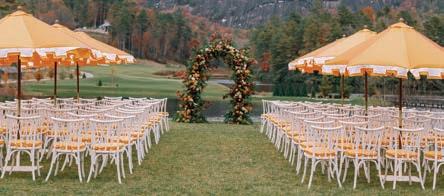



2.22.25
When asked about their partner’s best traits, Allison and Dom responded exactly the same way, saying each was the most genuine person they had ever met. “I said it first … the most selfless person I have ever met,” says Dom. “He truly would do anything to be there for the people he loves,” adds Allison.
After a first date in South End in early 2022, Dom proposed on Christmas Eve the following year. For their wedding, they wanted a classic, chic celebration with modern elegance and lush florals and greenery. A native Charlottean, Allison was torn between getting married in her hometown or Charleston. But a tour of The Governor Thomas Bennett House, with its grand piazza, gorgeous garden and majestic trees, made her decision. “It was the perfect mix of historic and intimate and so beautiful.”
The couple had special memories of trips to Charleston, dining on oysters throughout the city. During cocktail hour, they featured live oyster shuckers along with their favorite cocktails, a French 75 and Charleston Fizz. An oyster-shell covered bar and a stunning seating display mirroring the invitation design welcomed guests to the reception. Planner Sarah Cook’s use of luxe fern and taupe velvet linens with black-and-white accents, natural wood elements and statement crystal chandeliers added to the evening’s elegance. “It felt like (Sarah) had brought a piece of me to life in our reception space,” Allison says. “It perfectly embodied the wedding I dreamed of.”
For a late-night snack, mini Chicago hot dogs were served, a nod to Dom’s Windy City roots. “We were both so grateful for all our loved ones sharing the day with us,” says Dom. “Seeing so many people from each of our lives mingling, dancing and talking was truly special.”
Photographer | Kailee DiMeglio Photography
Venue | The Governor Thomas Bennett House, Charleston, South Carolina
Planner | SoHo Event Design
Floral Design | Petaloso
Dress | Suzanne Neville, Ladies of Lineage Beauty | Charleston I Do
Bridesmaids Dresses | Birdy Grey
Groom & Groomsmen Attire | Suitsupply (groom); The Black Tux (groomsmen)
Caterer | Salthouse Catering
Cake | The Tenacious Tart
Entertainment | Palmetto Strings (ceremony); The RiverTown Band (reception)
Rentals | Technical Event Company (lighting); Stradley Davidson, BBJ La Tavola (linens); Beachview Event Rentals & Design; Snyder Events
Custom Seating Display | Sawdust and Sweetgrass
Stationery | Viri Lovely Designs












Stepping into J.Major’s Bridal Boutique is like stepping into a dream world that’s been lovingly designed just for you.
Owners Ravi and Madison take pride in being one of Charlotte’s longest-standing independently owned bridal boutiques, having been around since 1984. If you’re looking for a wide selection of dresses, a team who cares and an experience that’s all about you, J. Major’s is a bride’s best friend.
Most bridal stores work on sales quotas and commission goals. There can be pressure applied, a limit on dresses the bride can try on and a focus on getting the bride to commit to a dress before she leaves. At J. Major’s, the staff recognizes that brides don’t want to be sold to, they want to have a great customer experience. “This
is a legacy institution and we see each and every bride as they are, not just numbers. We focus on the bride and make sure she feels seen. It’s all about her vision and what she wants – it’s about her dream day!” says co-owner Ravi. You’ll begin your journey by filling out an online survey expressing dream silhouettes, favorite fabrics and your goals for the day you’ll walk down the aisle. Once you come to the store, you’ll be paired with your very own stylist for the entire 1.5 hour appointment — ensuring every detail feels personal and unrushed. Don’t feel satisfied after five dresses? Try five more, dress try-ons are unlimited. Once you find the dress of your dreams there’s a champagne celebration and a toast to your happily ever after.

Since J. Major’s is a stand-alone institution, they operate independently from chain-norms. They solely focus on bridal selections, no mother-of-the-bride or bridesmaids dresses in sight, the day is all about you! Bring your nearest and dearest or book The Major Experience and enjoy the entire store exclusively for you and up to 12 guests. With nine designers — including popular designer Jenny Yoo’s entire bridal collection, the only store in Charlotte to do so — and up to size 32, every bride can find a design that feels like it was made for her!
At J. Major’s it’s not just about finding the perfect dress, it’s about feeling seen and celebrated through every step. Visit J. Major’s online to book your appointment today and let them help you find “the one!”




“1000/10!!! Truly the most amazing experience I’ve ever had.” - Zemira Campbell
“I had the absolute best experience I could’ve imagined with J. Major’s Bridal Boutique!” - Alyssa Melton
“From the moment I called to book my appointment, I knew J. Major’s was something special.” - Taylor Collins
11.2.24
Mackenzie and William toured several venues for their November wedding, but once they saw Mint Museum Randolph they were sold. “The backdrop of gorgeous trees with changing leaves and the wide open spaces where we could hold all the parts of the wedding … were just what we had been looking for,” says Mackenzie. The couple wanted to use color and fall decor in their celebration, but in a nontraditional way. Planner Madison Moseley chose a ginkgo leaf as a primary element, contrasting the golden yellow autumn leaves with rich black accents. For the ceremony, custom wood arches framed the aisle. “I had wanted it to feel like a church outside, and I loved the intimate look and feel,” Mackenzie says.
Incorporating family details was also important to the couple, both Houston natives who were in the same fifth-grade class. Mackenzie’s bouquet was wrapped with a sash displaying the names and wedding dates of her greatgrandparents, grandparents and parents. She chose music for the ceremony that had been used in her parents’ or William’s parents’ weddings. William’s godfather married the couple.
“Since neither of us are originally from Charlotte, it was especially meaningful to have all of our friends and family travel in from out of town,” Mackenzie says. “Our wedding was incredibly personal, which was what we wanted.”
the details:
Photographer | Wyeth Augustine Photography
Venue | Mint Museum Randolph
Planner | Madison Moseley Events
Floral Design | Meraki Blommor
Dress | Sareh Nouri
Beauty | Elle Beauty
Bridesmaids Dresses | V. Chapman
Groom Attire | OMJ Clothing
Caterer | Best Impressions Caterers
Cake | Sunflour Baking Company
Entertainment | Deans’ Duets (ceremony); Queen City Band (reception)
Rentals | Party Reflections; Curated Events Charlotte; Oxum Event Design (seating chart); Stradley Davidson (linens)
Stationery | Olive Paper
Transportation | Top Hat Rides















4.12.25
Haley and Evan met while working in Colorado and love the outdoors — hiking, biking and skiing together. So when it came time to get married, they knew the perfect spot: Haley’s family farm. “It only felt right to get married where we could celebrate with our family and friends and enjoy nature,” says Haley, who grew up in Charlotte.
The couple encouraged guests to wear boots, while vendors donned jeans and Carhartt-provided overalls. Haley’s dad describes the family farm as “a place where we plant trees and make memories.” When a chilly forecast dictated an enclosed tent, Haley and Evan brought the trees inside. The groom and Haley’s dad cut down trees for the tent’s poles, and floral designer Jay Lugibihl and planner Dina Blazek went to work.
For the reception, Haley’s mom made the bars by hand and named each table after a type of tree grown on the farm. Evan’s family, for example, sat at the Apple Tree table, a nod to his hometown of Fort Wayne, Indiana, and a state where Johnny Appleseed established apple tree nurseries. Baseplates at the head table were also cut from the farm’s trees. Invitations by Addie McElwee — a friend of Haley’s who has spent many nights at the farm — reflected the couple, their families and the special venue.
When it comes to wedding planning, Haley advises: “Pick great vendors, trust them and let them do their thing! We feel so lucky to have had amazing vendors who didn’t just bring our vision to life, but enhanced it. Letting vendors flex their creative muscles and lean on years of experience made our day seamless.”
Photographer | Amy Kolodziej, Amy Kolo Photography
Venue | Bride’s family farm, Iron Station
Planner | Dina Berg Blazek Events
Floral Design | In Bloom Ltd.
Caterer | Best Impressions Caterers
Cake | Edible Art
Entertainment | Mark Hoffman (ceremony); Adam Rose (cocktail hour); Evolution Party Band (reception)
Tent | Creative Solutions, McCoy’s Event Professionals
Stationery | Adelaide Art & Fine Papers
Special Guests | Alpacas, Good Karma Ranch






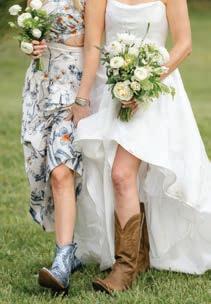




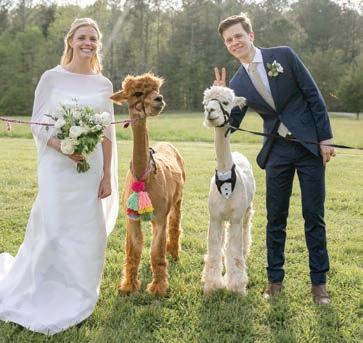









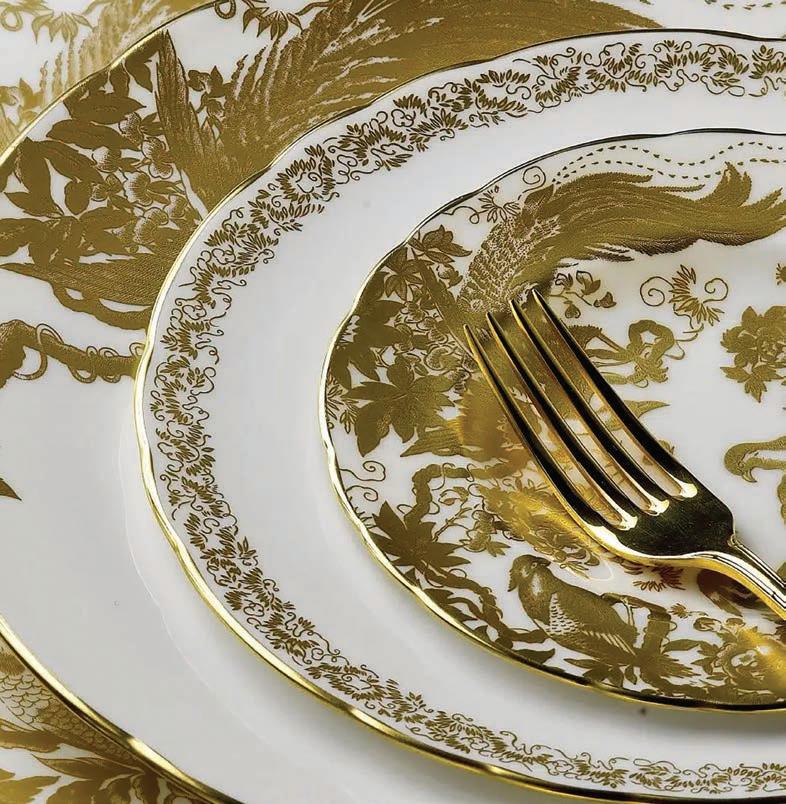



11.23.24
For their wedding, Charlotte couple Tyler and Nick had just one city in mind: New Orleans. Nick, a graduate of Tulane University, continued visiting the Big Easy post-graduation, soaking up its vibrant energy, incredible food and rich culture. It soon became a favorite destination for Tyler, too. “It’s a city that celebrates life in every way,” she says. “It felt like the perfect backdrop for the kind of wedding we dreamed of: one filled with music, tradition and soul.”
Following the ceremony, Tyler and Nick joined their guests for happy hour at Hotel Henrietta on St. Charles Avenue. Afterward, the wedding party paraded to The Elms Mansion for the reception, following a brass band in a lively second-line procession.
Instead of a plated dinner, the couple opted for an array of chef stations, featuring Mediterranean, Italian and Southern flavors that reflected their heritages, personalities and love for sharing a great meal with family and friends. A live oyster shucker served fresh oysters on the half shell, along with boiled shrimp, seaweed salad and calamari salad. Dessert included wedding cake and baklava.
Most important on the menu: Bojangles cajun filet biscuits for a late-night snack. Tyler’s grandfather, Richard Thomas, was co-founder of the famous chicken franchise. “The one and only concern I had with getting married in New Orleans is that we were deep in Popeyes territory, and there wasn’t a Bojangles within a two-hour driving distance,” Tyler says. “After one small request to Bojangles’ leadership team, they were ready to deliver, literally … It was a small, heartfelt tribute to my late grandfather and best friend … Sharing something he created, with the people we love most, felt like a meaningful way to have him there with us on our wedding day.”
Photographer | Love is Rad, Ollie Alexander
Venue | Holy Trinity Greek Orthodox Cathedral, New Orleans (ceremony); The Elms Mansion (reception)
Planner | Iris and Oak Events
Floral Design | Antigua Floral
Dress | Ines Di Santo, Alexia’s Bridal Boutique
Beauty | Jessica Jackson Hair; Kristen Noel Kiefer, Kristen Noel Makeup
Groom Attire | OMJ Clothing, custom bamboo tuxedo
Caterer | The Elms Mansion
Cake | La Louisiane Bakery
Entertainment | BRW New Orleans Band
Stationery | Arzberger Stationers




Whether it’s your wedding, rehearsal, anniversary, or a cocktail party to celebrate your birthday; our venues guarantee an experience in a setting your guests will never forget. mintmuseum.org/rent-the-museum
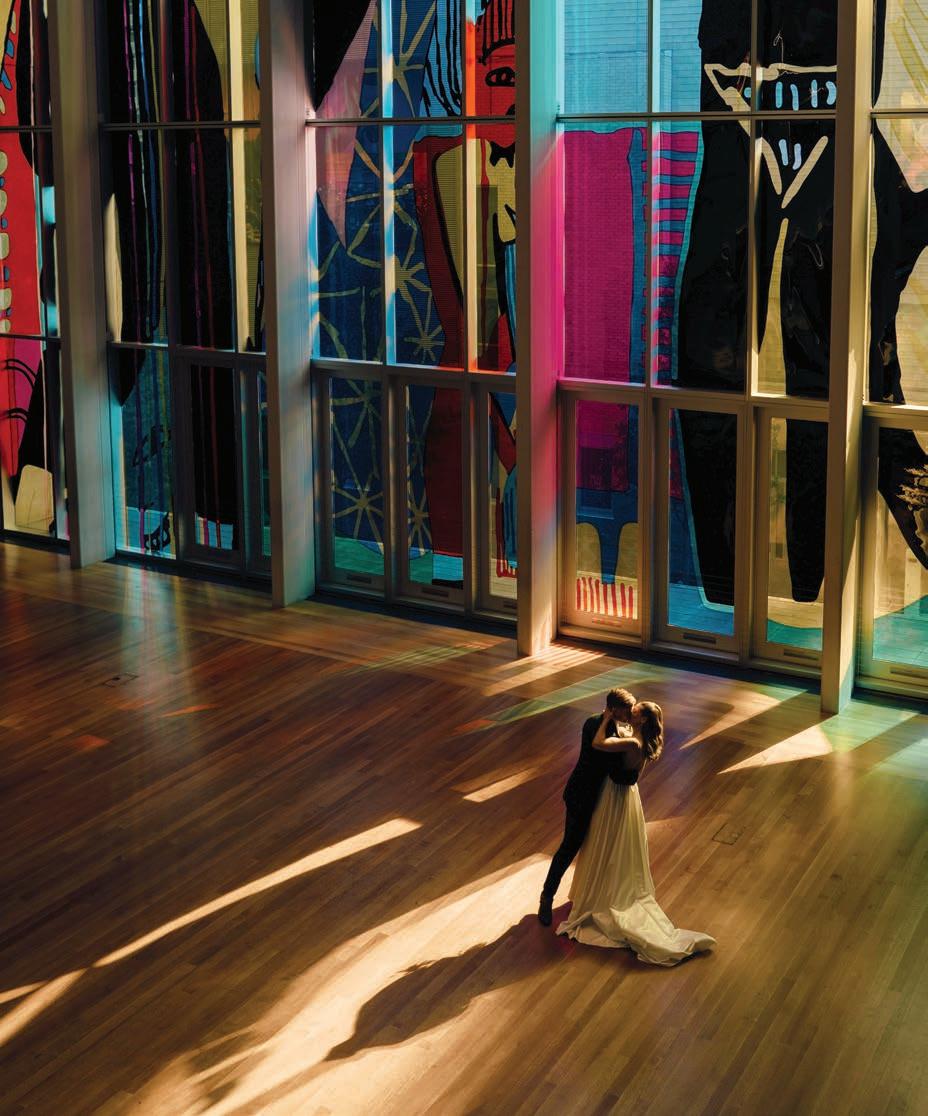









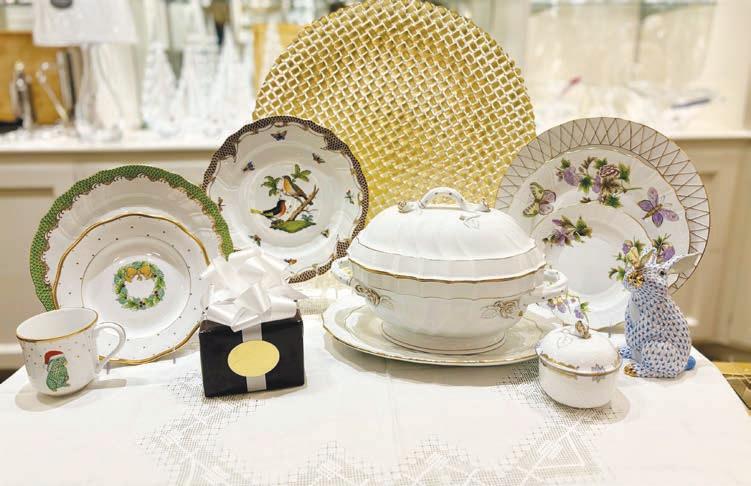

1.11.25
Laura Beth and John grew up in SouthPark, but their paths never crossed. Attending different colleges — Laura Beth went to Clemson University and John played football at Washington and Lee University — they didn’t both live in Charlotte again until 2024. But thanks to Hinge and John’s younger sister Kendal, who has Down syndrome, the two eventually met. “John’s first picture had Kendal in it, and I knew her from various volunteer activities,” says Laura Beth.
That connection was significant, as family is important to both Laura Beth and John. Following the couple’s engagement in April 2024, Laura Beth’s family experienced great loss. Her brother and grandmother died unexpectedly a few months apart, and her younger cousin, Kaija, was in hospice care when they got married.
At the wedding, Laura Beth wore a diamond pendant, her brother’s birthstone. The church, date and music had been selected by Laura Beth’s grandmother Julia (“Nana”) during the couple’s engagement. Their first dance was a surprise choreographed routine that included an ode to Elvis, a favorite of Nana. John wore socks with seagulls in honor of cousin Kaija (her name means seagull in Latvian).
Wedding planning and day-of logistics were stress-free and special, as all of the vendors were close family friends. “Amidst the grief of all that 2024 entailed, our engagement and wedding were a bright spot for many,” Laura Beth adds. “We have, in large part to our faith, continuously learned what it means to hold both sorrow and joy at the same time and to find the beauty in doing so.”
Photographer | Katie Spata Photography
Venues | Myers Park United Methodist Church (ceremony); Bentley’s Restaurant (reception)
Planners | Bride and mother of the bride; Tim Bagwell
Floral Design | Marigold Floral Design
Dress | Anjolique Bridal & Formal; Prada (shoes)
Beauty | Van Ta, Blossom Hair Boutique (hair); Samantha Vonsiatsky (makeup)
Groom Attire | Jos. A. Bank; Lucchese (boots)
Rings | Diamonds Direct
Caterer | Bentley’s Restaurant
Cake | Brenda Dickson
Entertainment | Retro Ray, Samantha Vonsiatsky
Stationery | Good Mood Design Co.





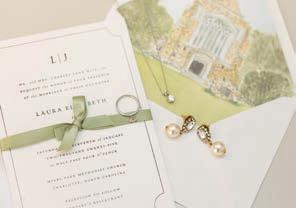






hen Felipe moved into his Eastover condo four years ago, he didn’t expect to find his soulmate. But Tom lived one floor below, and a friendship quickly grew into
They chose the majestic Omni Homestead Resort in Hot Springs, Virginia, for their wedding weekend, wanting a sophisticated, intimate celebration filled with thoughtful details and top-tier accommodations. “We chose to marry in the winter because, as two men in tuxedos, we loved the idea of celebrating in cooler weather,” says Felipe, owner of FGF Interiors and co-founder of Dancing with the Stars of Charlotte. Tom, from Salisbury, works in real estate. Both the rehearsal dinner and wedding were black tie and included several Latin traditions, nods to Felipe’s Colombian heritage and Tom’s Cuban grandmother. Their mothers walked them
The couple incorporated their custom wedding crest into every detail, using it on pillows, napkins, hand towels for the washrooms and a stunning round bar. Lush greenery and the resort’s beautiful architecture set the tone for a stylish affair. “Overall the wedding was elegant, thoughtfully curated, fun and sophisticated, exactly as we
Michelle Elyse Photography
The Omni Homestead Resort & Spa, Hot Springs, Virginia
Planner & Floral Design | Caroline LaRocca Event Design
Lily Yatawara, Tom James of Charlotte
Tom James of Charlotte
Stubbs & Wootton
Elizabeth Bruns
The Omni Homestead Resort
Entertainment | Split Second Sound
Arzberger Stationers




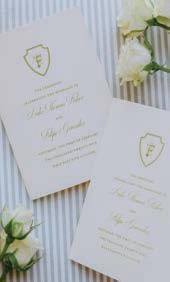




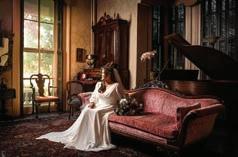



4.26.25
“We wanted a classic, elegant interfaith wedding that would include meaningful things to us and our families such as traditions and heirlooms and would celebrate Charlotte, the city where we met, live and love so much,” says Abby of her and Andrew’s wedding weekend.
Andrew, a CPA at PwC, and Abby, a talent acquisition manager for Atrium Health and an adjunct professor at Queens University, welcomed guests to the Queen City with a party at Legion Brewing SouthPark that included barbecue, Cheerwine, Krispy Kreme doughnuts and a groom’s cake decorated in the colors of Andrew’s alma mater, Indiana University. Southernthemed welcome bags were filled with Lance crackers, boiled peanuts, moon pies and cheese straws.
At the ceremony at Queens University’s Belk Chapel, the couple’s corgis, Louie and Lenny, were escorted down the aisle. Abby wore her mother’s wedding veil and held an heirloom white wedding Bible, also carried by her grandmother, mother and aunt on their wedding days. Abby’s grandmother’s 72-year-old ostrich-feather pen was placed at the guest book, and the cake topper and knife at the reception were used on the wedding cakes of Abby’s grandmother, mother and aunt. For their reception, Andrew and Abby arrived in a vintage Bentley, a nod to Abby’s middle name and the venue, Bentley’s Restaurant.
Photographer | David Howell Photography
Venues | Belk Chapel, Queens University (ceremony); Bentley’s Restaurant (reception)
Planners | Bride and groom; mothers of the bride and groom
Floral Design | Bride’s mother; Magnolia House Florist
Dress | Anjolique Bridal & Formal; mother’s veil (handmade by a friend of bride’s grandmother)
Beauty | Blo Charlotte (hair); Bluemercury (makeup)
Groom Attire | Paul Simon Co.
Rings | Ballantyne Jewelers
Caterer | Bentley’s Restaurant
Cake | Queen City Cakes, Jessica Klich
Entertainment | Queens student violinist Aria DiLoreto ’27 and Royal Voices of Charlotte (ceremony); Next Level Band Charlotte (reception)
Stationery | Crayton-Heritage
Transportation | Luxury Royal Cars




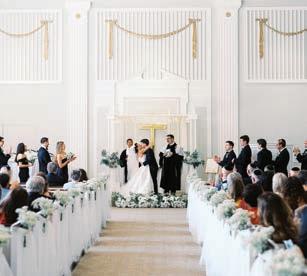
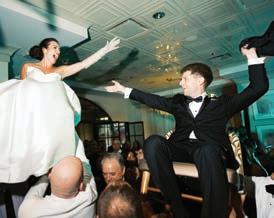


Evrybdy Studios knows how to tell a story, and they want to tell yours. Robbie Shaw, Founder and CEO of the studio and creator of podcast “Champagne Problems,” realized he had a passion and love for the art of conversation. He wanted the conversations he was having around mental health, adversity, and perseverance to be accessible beyond the scope of a one on one interaction. The answer? Going digital. He founded Evrybdy Studios with a team of “audio/video creators and marketing experts” who are excitingly ahead of the game when it comes to utilizing authentic conversation to establish trust, thought leadership, and brand awareness.
Robbie and the team create full-service podcast solutions for businesses ranging from brand strategy to production and distribution. With today’s shift towards digital-first marketing solutions, Evrybdy Studios hasn’t just jumped on the bandwagon, they’ve started to drive it. In just two years, they’ve curated content from world-class experts, brand sponsorships and renowned guests, and have garnered more than 400k downloads across their client podcasts.

In a world where podcasts and audio/visual services seem saturated, Evrybdy Studios stands out by serving B2B and B2C organizations, helping them reach their target audience. “It’s not about popularity, it’s about getting information, thought leadership, and brand awareness to the exact people you’re trying to reach,” says Robbie about the intention and purpose behind podcasting. They carefully and masterfully create unique packages for each client considering business needs, making room for your stories and sharing your conversations with everybody.

A monthly guide to Charlotte’s parties and galas



benefiting Mitchell’s House
The Union at Station West
September 26
Patrons sparkled in old-school glamour for this evening aimed at raising funds to provide counseling for sick children and their families.
photographs by Daniel Coston
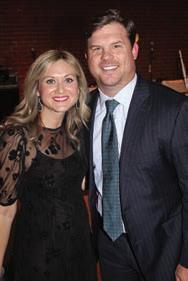


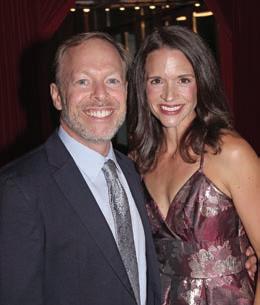






A monthly guide to Charlotte’s parties and galas
benefiting Dottie Rose Foundation
The Casey by Beau Monde
September 18
Supporters raised a dazzling $155,000 for programs that help girls grow technology skills, creativity and confidence. photographs by Daniel Coston

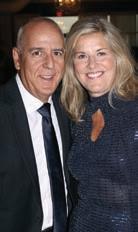


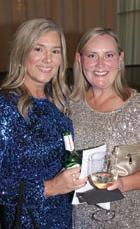


A special section saluting health and wellness professionals dedicated to helping others lead robust, active lives. It will accompany Business North Carolina’s and SouthPark’s annual listing of the region’s Top Doctors, one of our most popular features and a valuable resource.

Contact Jane Rodewald 704-621-9198 today. Deadline Monday, November 24, 2025 Visit us online at southparkmagazine.com/advertise.



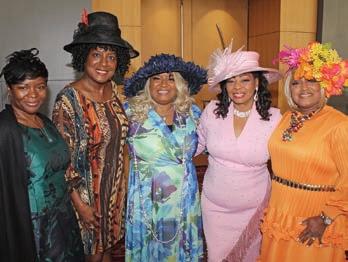

A monthly guide to Charlotte’s parties and galas
The Ritz-Carlton and Belk Theater
September 18
The new CSO season started with a black-tie evening of fine dining and music. Renowned violinist Gil Shaham played Tchaikovsky, as Music Director Kwamé Ryan directed his first CSO gala.
photographs by Daniel Coston




benefiting UNCF Charlotte Convention Center
September 13
Fashion and philanthropy combine for this annual luncheon which raised more than $500,000. Sheila Johnson, founder and CEO of Salamander Hotels and Resorts, gave the keynote speech while Shelly Cayette-Weston, Kristy Fercho and Kristi Coleman were honored as community and business leaders.
photographs by Daniel Coston


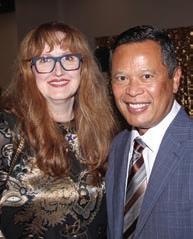


benefiting Arts Empowerment
Project
Mint Museum Uptown
October 1
Patrons enjoyed a festive evening with live music, an auction and hors d’oeuvres while honoring Sonya Pfeiffer, Bonita Buford and Makayla Binter for supporting arts in the community.









New Cotswold murals add flair to the neighborhood shopping hub. story and photographs by Sharon Smith
The newest phase of the Cotswold Village refresh didn’t require a ton of hammers and drills. It just needed lots of paint, creativity and an investment in local talent.
Since spring, artist teams have been busy bringing their mural sketches to life throughout the property.
The grey brick wall outside ToyMania now pops with Natalie Daratony’s techno-colored poppies. Inez King, of Butler’s Pantry, enjoys the view daily from the shop’s big glass window. “Who wouldn’t love to stand here and look out and see the color, the poppies. It’s a little ray of sunshine,” King says.
She’s also fond of the hornet mural by Junior Gomez around the corner. King says each one adds personality to the shopping center, where the store has


been a tenant for four years.
There’s the whimsical mid-mod owl by Scott Partridge outside World Market. Pam Imhof’s mixed-media seascape by VisionWorks combines intricate crochet work and painting. Matt Moore’s vivid wave streaming from behind a little girl is pure joy.
Asana Partners, which bought the open-air mall two years ago, promised major upgrades. There’s fresh paint on the facade and new outdoor seating, and construction is underway in the area to be anchored by a new Sycamore Brewery.
But the decision to partner with Jenny Vallimont, whose consulting firm Gökotta connects local artists with installation projects, gives this longtime neighborhood center something it was missing — a little extra oomph. SP
